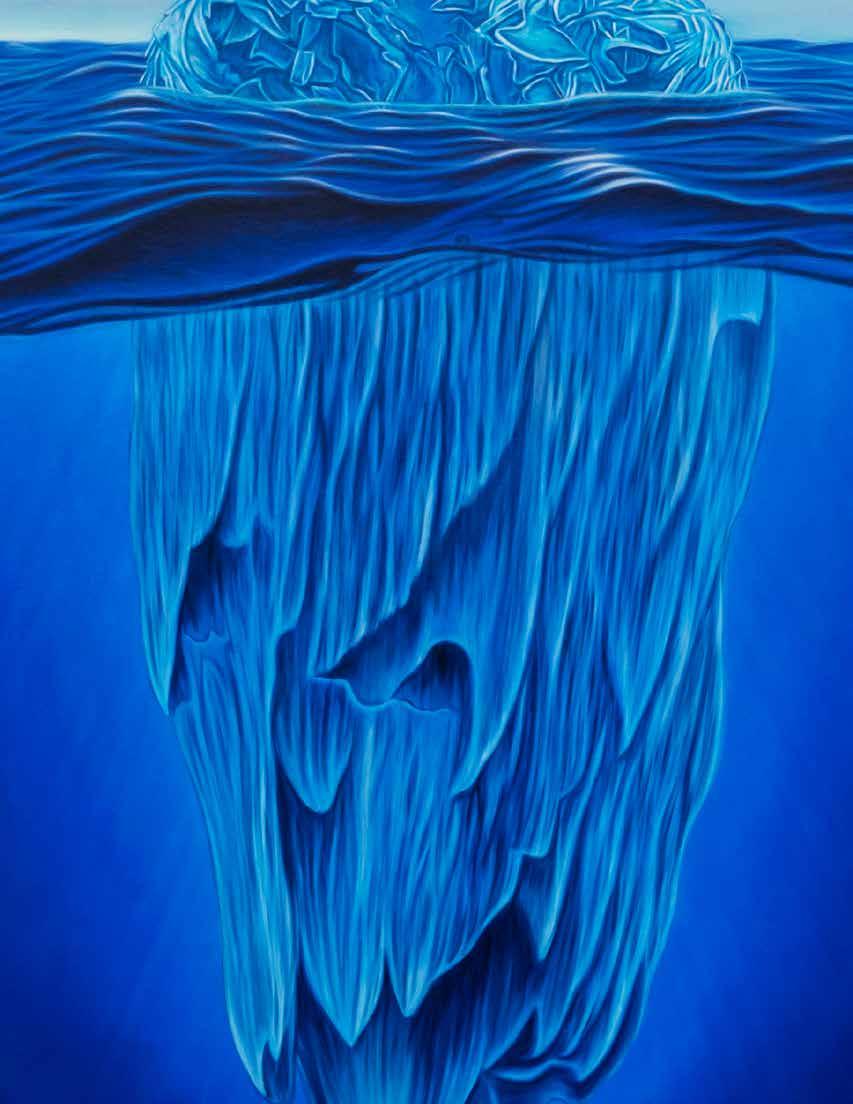Kajahl Submersia

Front and back cover Iceberg Entity I (Pointed Peak Crown), 2022 (detail)


Front and back cover Iceberg Entity I (Pointed Peak Crown), 2022 (detail)
Monique Meloche Gallery
November 12, 2022 - January 7, 2023
Essay by Alyssa Brubaker Designed by Megan Foy Edited by Staci Boris Photographed by Robert Chase Heishman
This catalogue was published on the occasion of Kajahl’s second solo exhibition at Monique Meloche Gallery, Chicago.

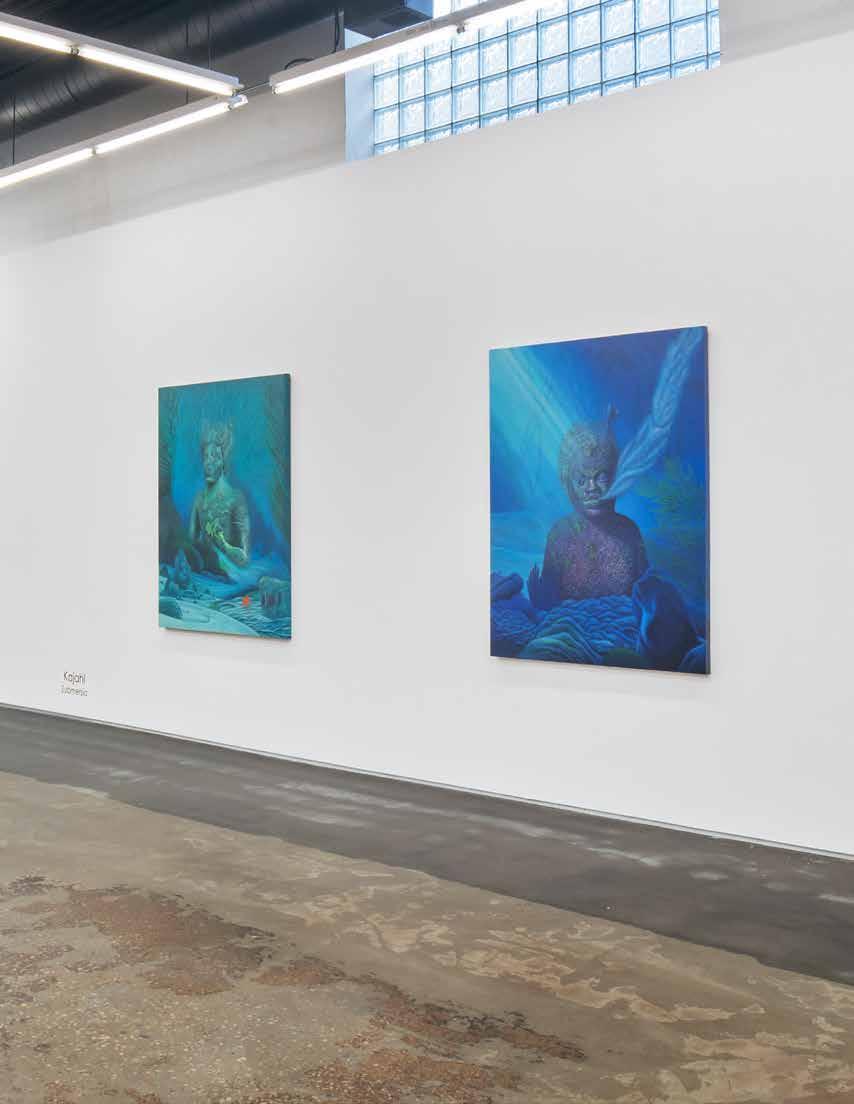
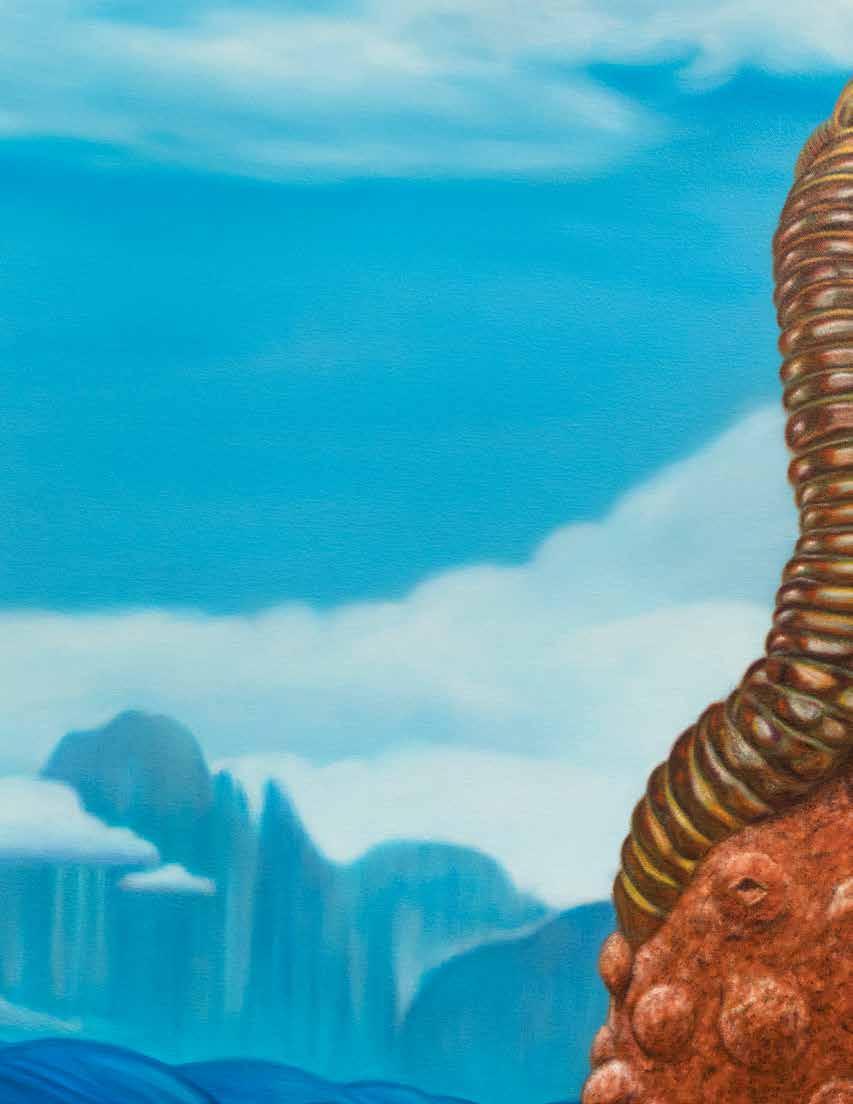

My new studio overlooks the Monterey Bay, CA––its beauty, tranquility, and mystery have had an influence on my work. As entities have left palatial settings and interior spaces, they such as me have found themselves surrounded by the natural world. In Submersia, I’ve created an ecosystem where artifacts from the Greco-Roman era are reanimated through oil paint as “Iceberg Entities” and “Oceandwellers.” Aethiops, “blazed faced” as they were referred to in ancient text, are repurposed in the form of bronze, glass and terra-cotta objects known as balsamarium, oinochoe and rython vases. Such objects served a utilitarian function while simultaneously being found to depict individuals possessing phenotypes typically associated with sub-Saharan Africa. Harkening back over two millennia, I interrogate these fascinating and controversial subjects, probing our relationship to these objects that confront us from an alien world.
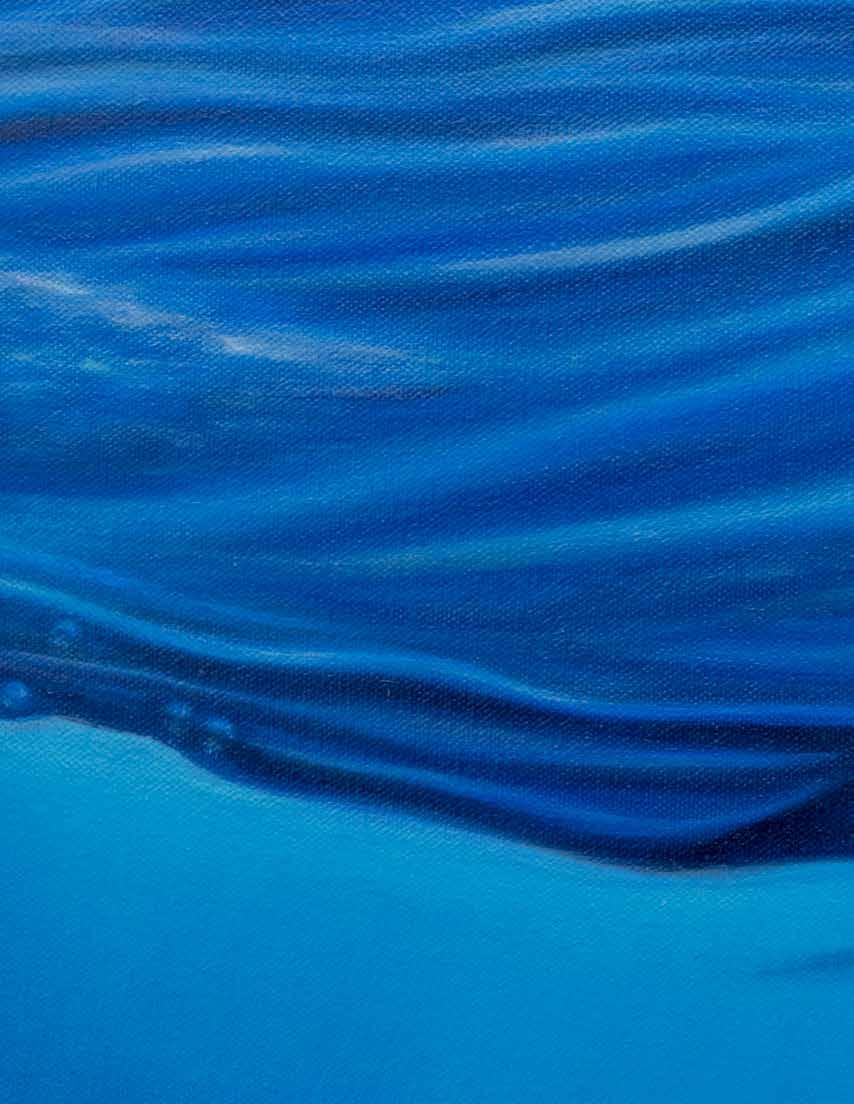
Isolated in deep water, as if a glacial island unto themselves, we are confronted with four large scale paintings depicting Iceberg Entities. Artifacts meld into thawing bodies that culminate into half man, half iceberg. Frozen, crackling ice and glacial peaks form around the heads and torso of each figure while the lower body descends into the abyss. I refer to this as “Iceberg History,” rendering visible waterlines to serve as a metaphor for temporal demarcation; separating the visible from the invisible world emphasizing water’s ability to obscure, conceal, or reveal what was once beneath.
Completely submerged, the aquatic Oceandwellers or Coral Kids depict illusive inhabitants of the ocean floor that make up this fictional realm. Strewn across the foreground are large rocks, algae mollusks, and ocean flora typical of a marine jungle. In the distance we can make out coral vestiges and swaying kelp suspended by the ocean current. Occupying these underwater terrains, the figures gaze directly at us depicted in high clarity, as if aware of our presence. Plumes of air bubbles exaggerate each figure’s exhaling breath, reinforcing the
notion that each being is sentient. Exposed to the elements, salt water has oxidized a patina, creating a pallet of turquoise and violet hues of skin tones. Thicker applications of oil paint capture the rough materiality of each figure’s body created by exposure to salty erosion, while multiple layers of thin, transparent oil paint allow the illusion of ethereal underwater atmospheric effects, lending to a believable sense of dimensionality within each picture.
-Kajahl, November 2022
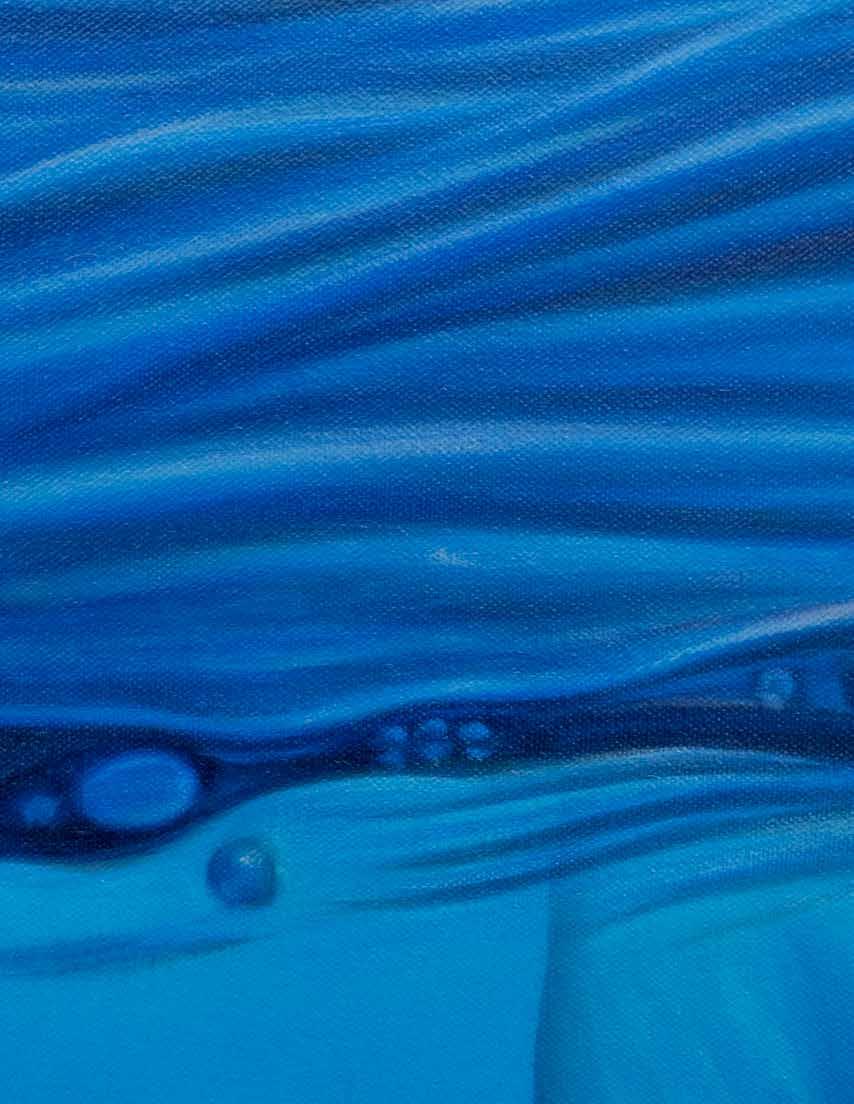

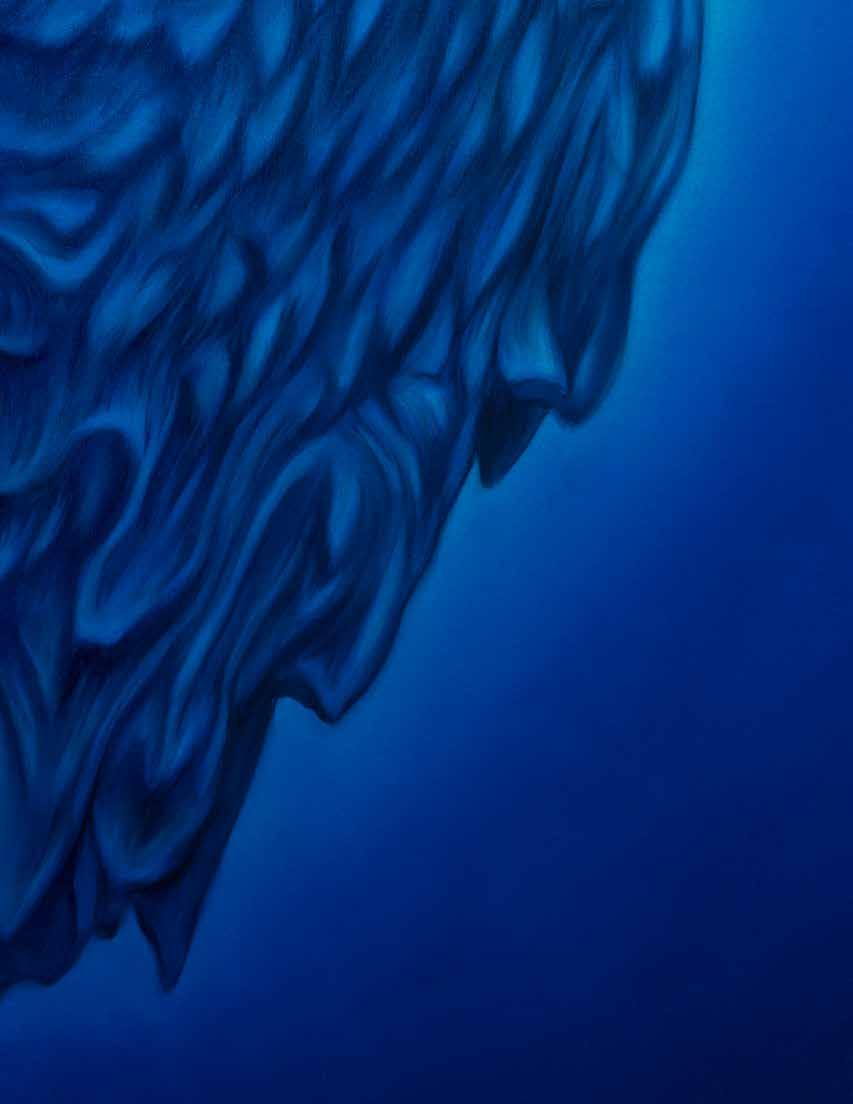
Through a vigorous practice, Kajahl resurrects objects that lie dormant, sifting through countless museum archives in an unrelenting search to unearth the visual cannon of Black and Brown subjects in art history. Kajahl’s hybrid identities traverse distinctive cultures and temporalities, utilizing speculative fiction to consider new narratives around race and identity. Starting with Greco-Roman artifacts from the Hellenistic era, the works on view explore early portrayals of Blackness dating back 2,000 years.
Submersia presents a series of new paintings that incorporates various bronze, glass and terra-cotta objects that depict Aethiops – a Greek term used in ancient texts that translates to “blazed
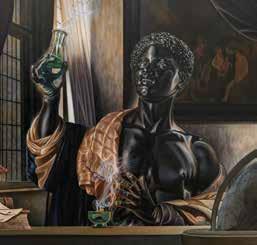
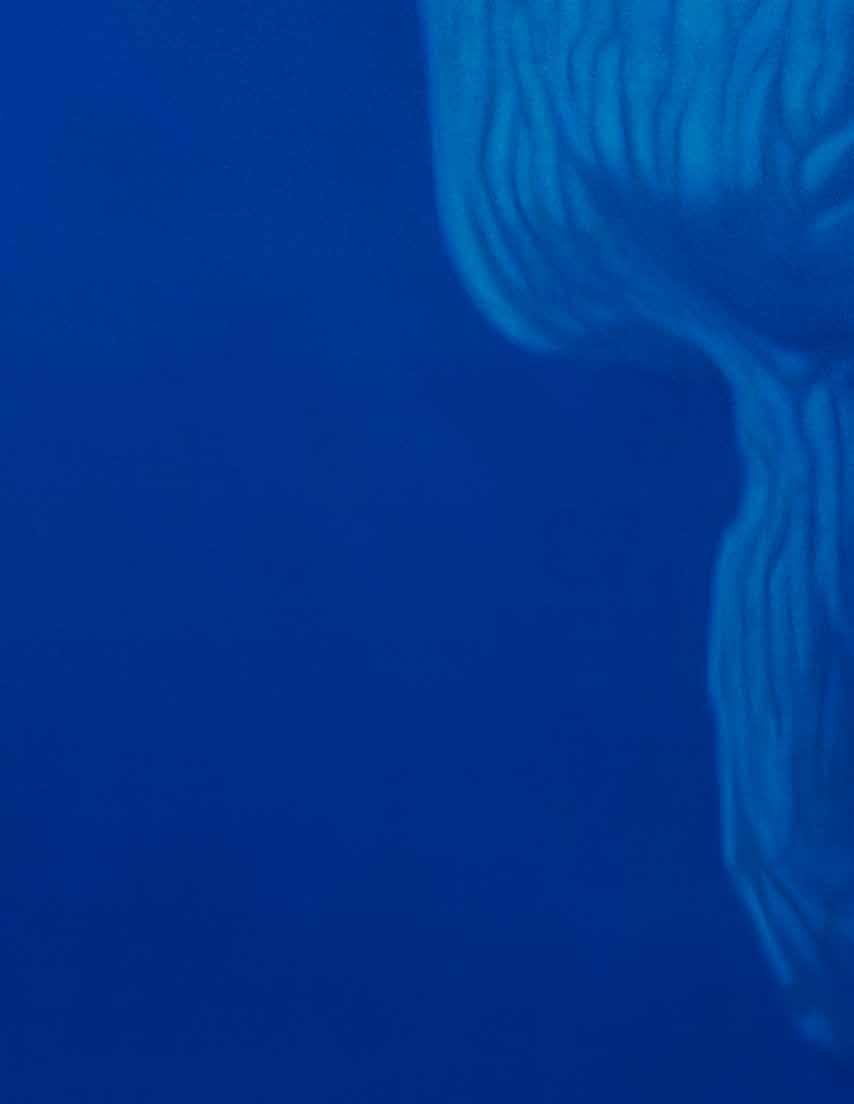
Alchemist, 2020 (detail)
face” – which was applied to such peoples by ancient geographers in what was then called Nubia.1 By combining these functional objects such as Balsamarium, Oinochoe, and Rhyton Vases (vessels typically used to carry wine, oil, etc.) the artist presents contradicting histories related to the discussion of racism in antiquity and contemporary discourse around Blackness. Whereas the Blackamoor figures in the artist’s prior works dealt directly with the relationship of material to skin tone, notably there is an absence of color to assign race, a deliberate decision that instead places emphasis on the physical characteristics
1 The Getty Museum. (2021, September 22). Art Break: Seeing Blackness in Greek and Etruscan Art [Video File]. YouTube. https://www.youtube.com/watch?v=SSzzFaNGpmQ
historically associated with sub–Saharan Africa as rendered through Greek antiquity. The hybrid subjects who once lived in palatial settings and other natural worlds have been reanimated as semi-floating iceberg entities covered in crackling ice, their lower body revealing itself to be completely frozen. Water, symbolic for its tether to colonization and its polarizing relationship to climate change, further complicates the conversation. As we contend with the direct gaze of these floating figures in the middle of what appears to be a vast ocean, the artist is asking us to suspend our contemporary beliefs around race. In an online conversation presented by the Getty Museum. “Seeing Blackness in Greek and Etruscan Art” scholar Sarah Derbew states “The worlds in which these objects were created are not our world. But conversely, we also exist in a world where we cannot unsee race. We cannot unsee the ways in which Blackness has been permutated to satisfy particular colonial enterprises.”2
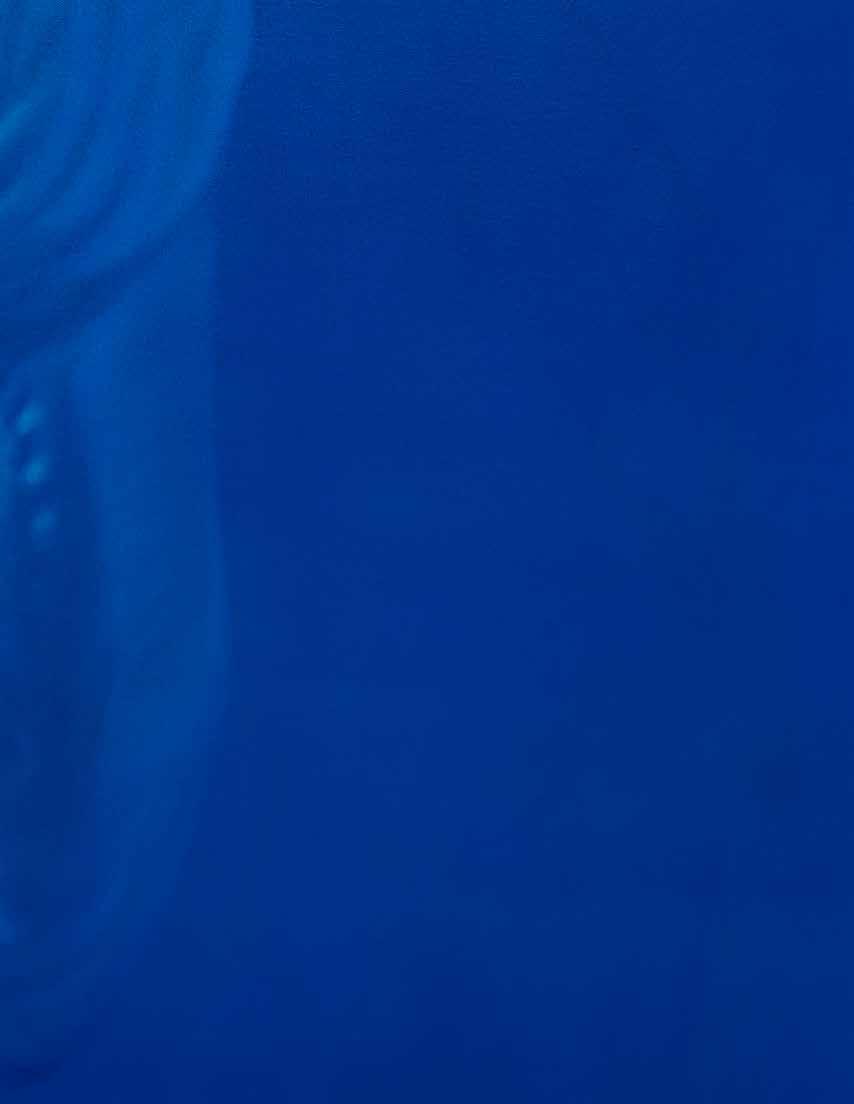
As we dive deeper, we find the figures sunken, resting on the
2 ibd.
ocean floor. These deep-sea habitants occupy underwater terrains surrounded by coral reefs, swaying kelp, and rocky escarpments, patinaed and eroded by the effects of longterm submersion, skin tones rendered through thicker applications of turquoise, green, and violet oil paint. Who these subjects are, how they got here, or where they were going remains to be seen, yet the depth at which they exist suggests a connection to the relationship we have with our oceans and how little we understand of these undiscovered worlds. The ocean, emblematic of our universe with its depths equally as pitch black and silent as the cosmos, is a carrier for hidden histories.
As we navigate through Kajahl’s illusionistic spaces, we are contended with the chronicles of lost ancient civilizations, sunken cities à la Atlantis that depict flourishing cultures, rich with life, as illustrated through plumes of air bubbles, an exhaling breath. Or perhaps these are among the lost souls from the Middle Passage. Considering the symbolism of water as it
relates to Carl Jung’s theory of the unconscious, we often only see the surface but cannot easily see into its depths. By placing these subjects on the ocean floor, Kajahl is suggesting that our collective understanding of identity cannot be read simply at face value, challenging our subconscious Colonialist conditioning as told throughout art history.
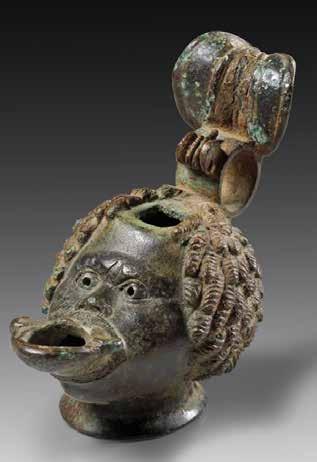
Submersia takes us to a time before the construct of race existed, blending inaccuracy with fantasy to create other worlds. Kajahl’s transformative assemblages reengages emerging and submerging identities, reconnecting to early civilizations and provoking our determinism to superimpose modern identity politics onto the past. By choosing to conceal or reveal hidden narratives through elemental forces such as water and ice, a changing climate is revealed to us. As we consider the spiritual power of water and its cleansing and destructive properties, how might we look to the past to reimagine our future.

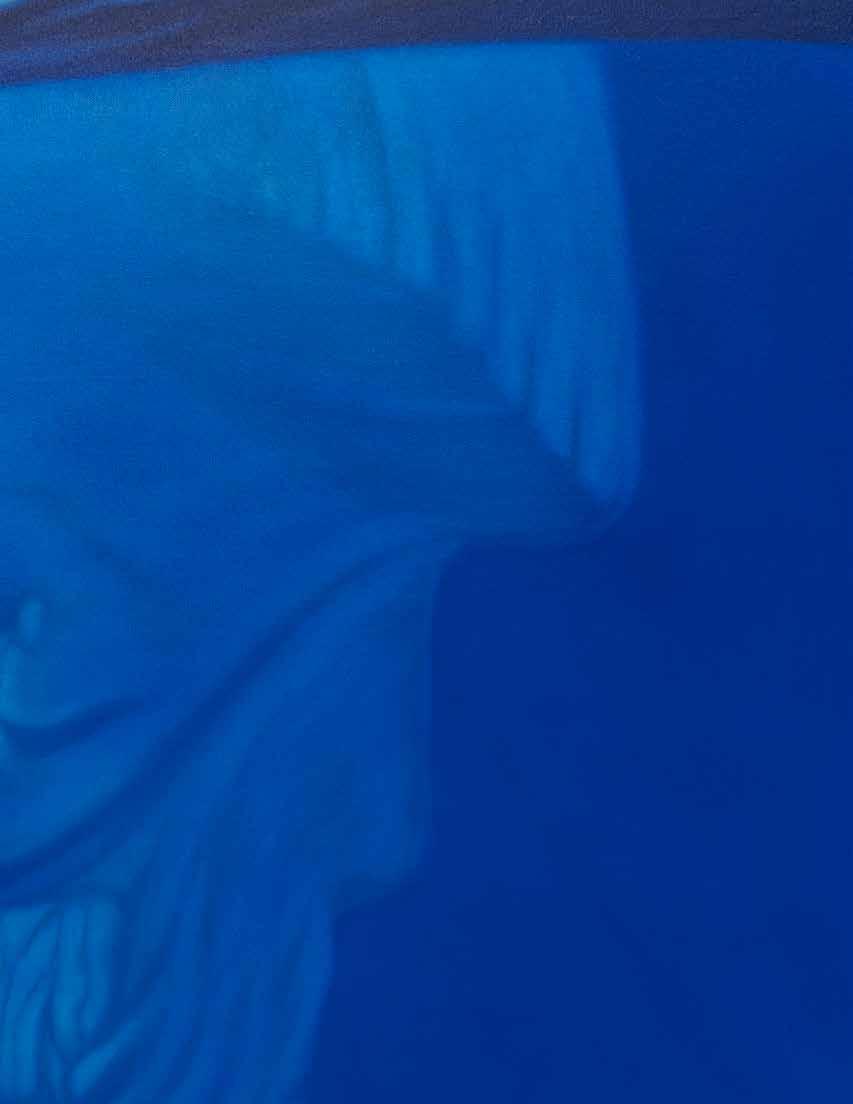

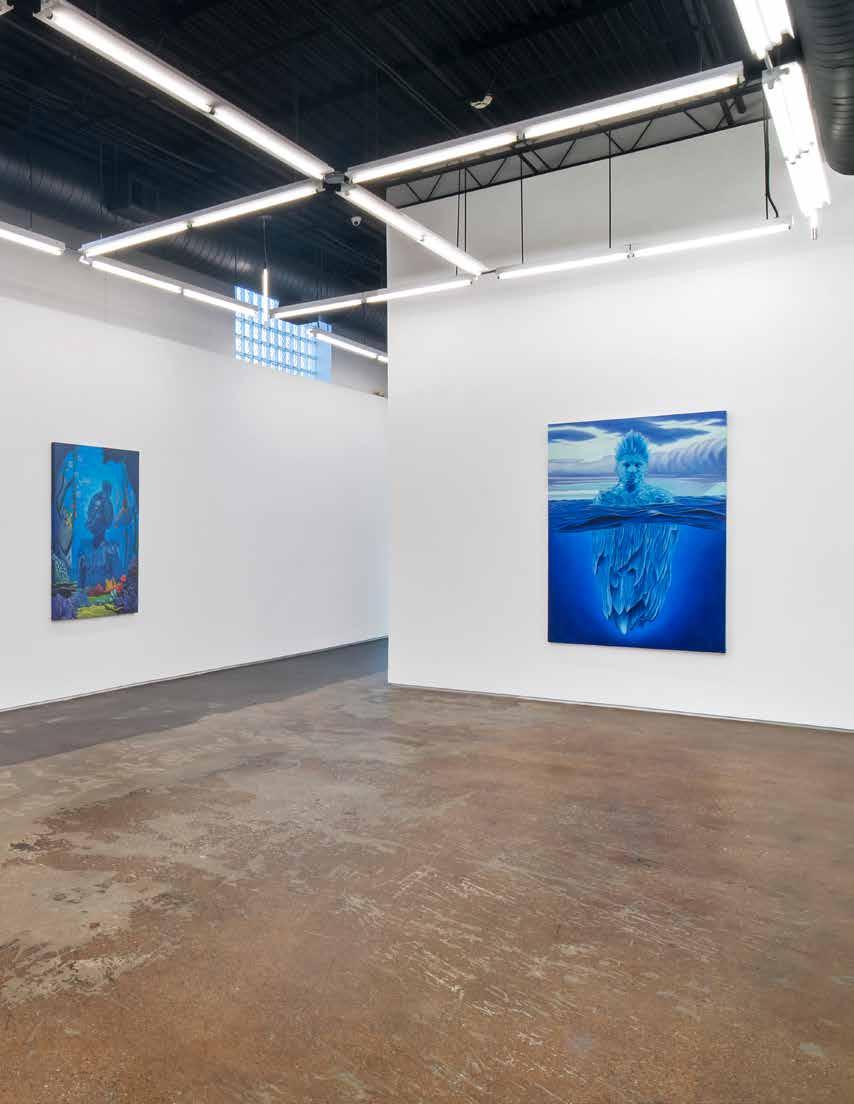


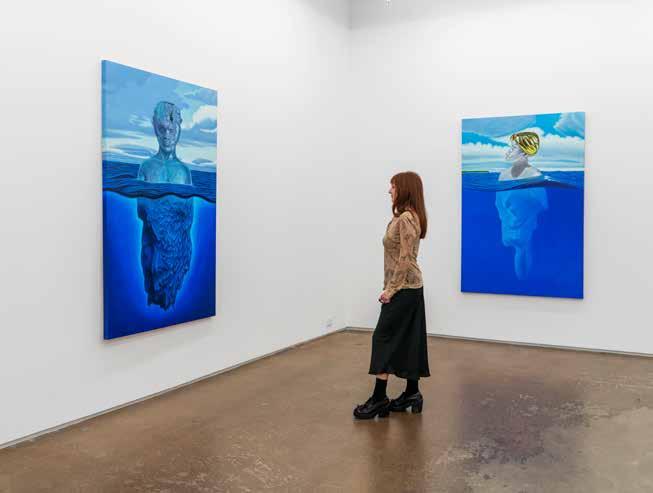

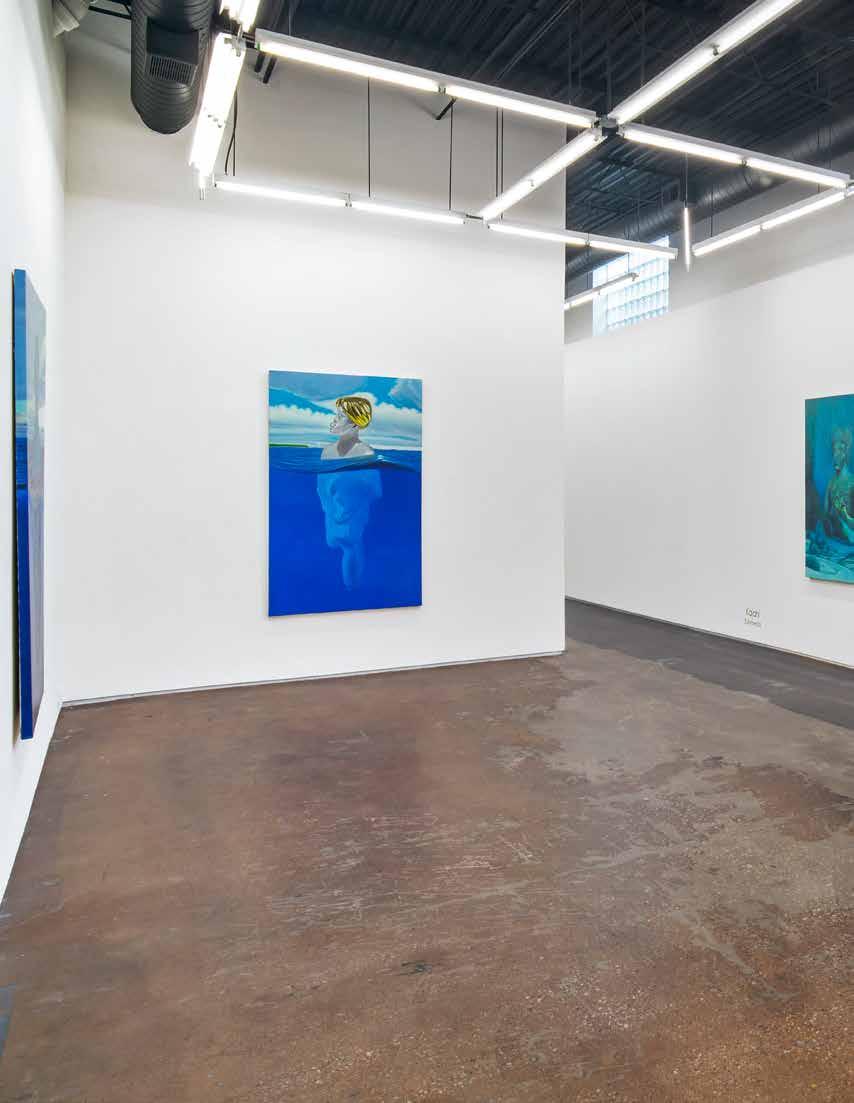
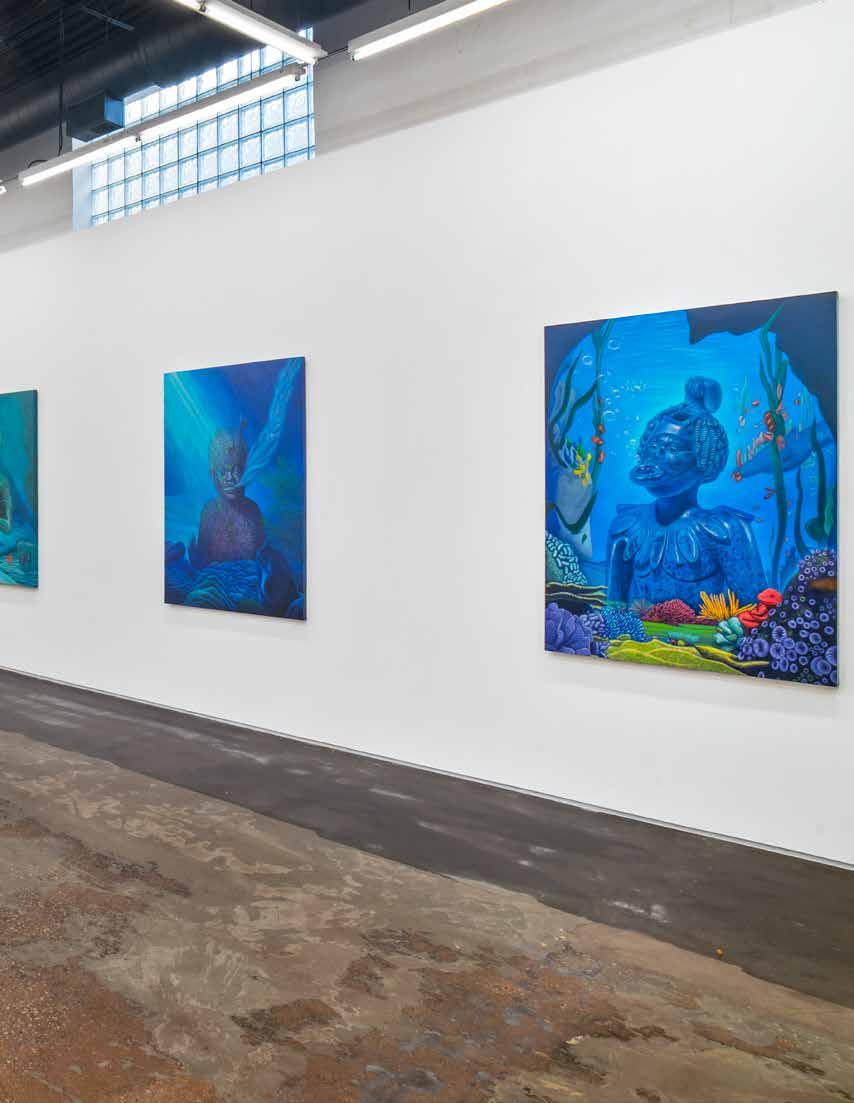

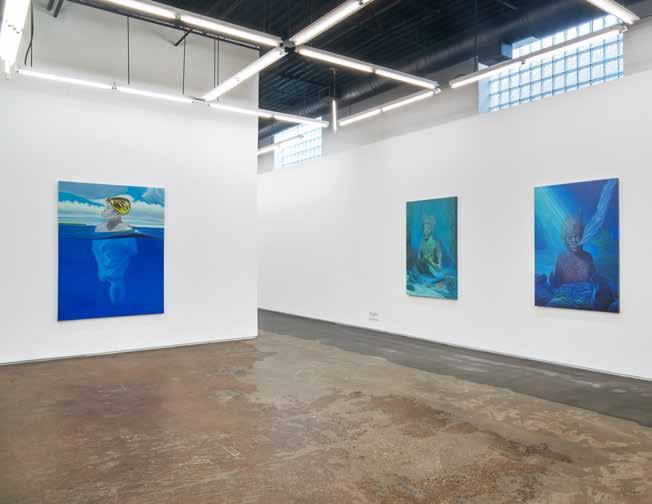

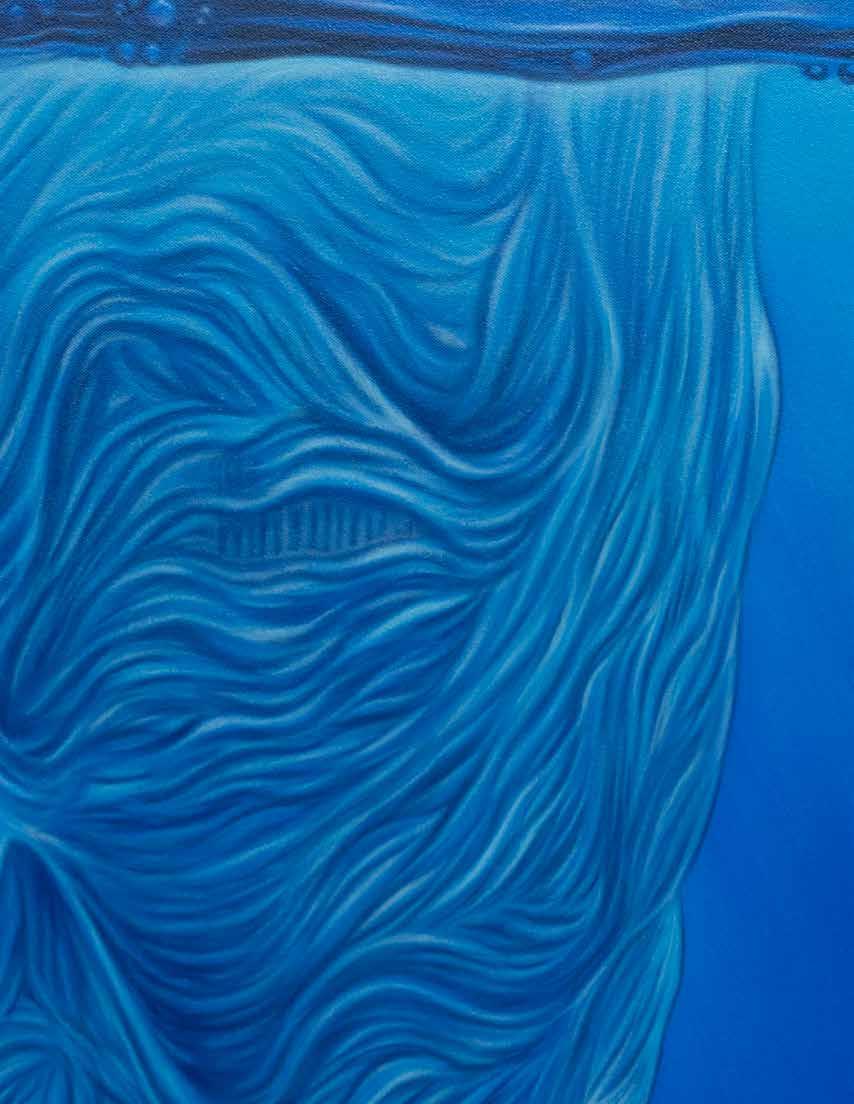
Amphibian Resurfaced, 2022 oil on canvas 60 x 48 in 152.4 x 121.9 cm

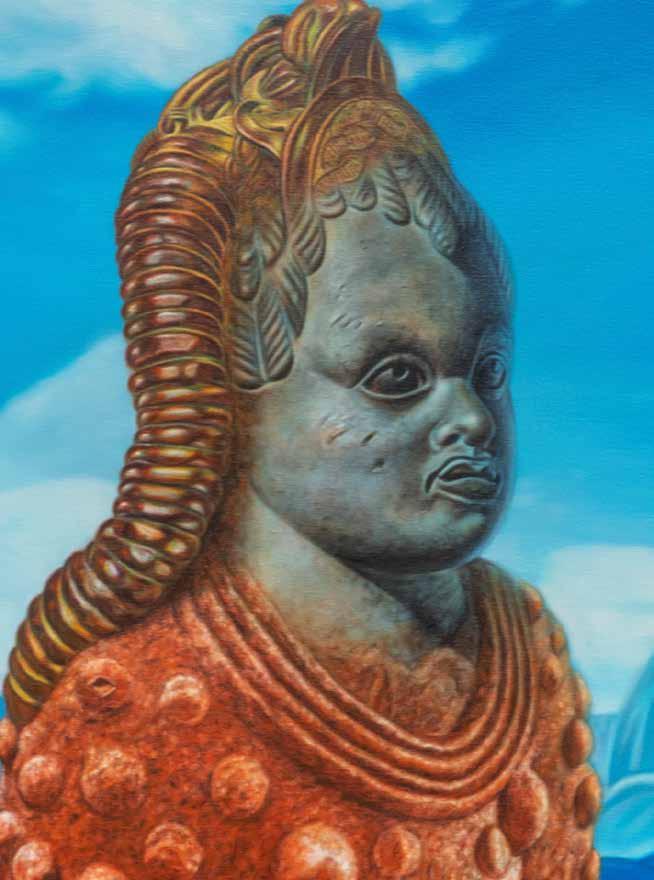

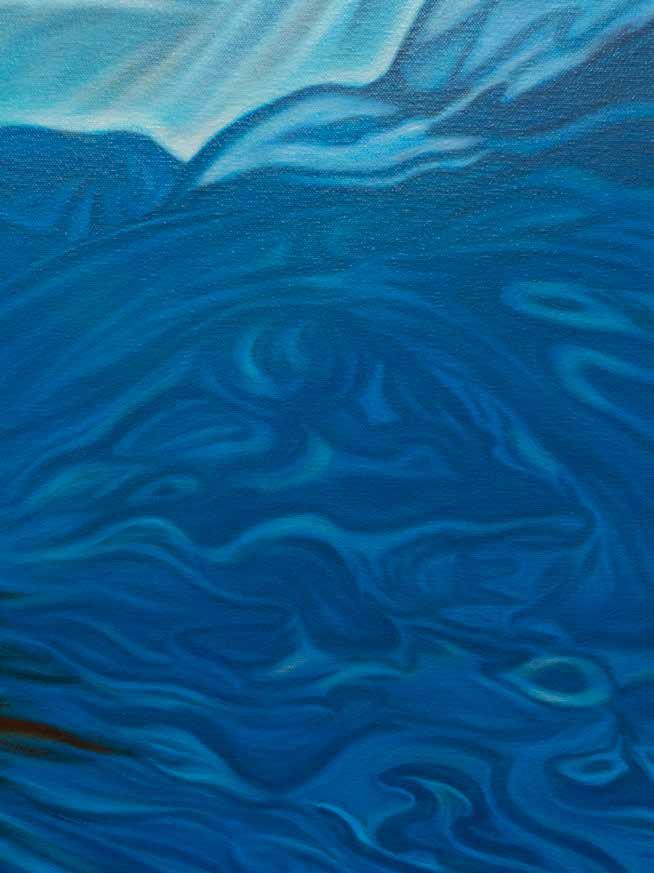

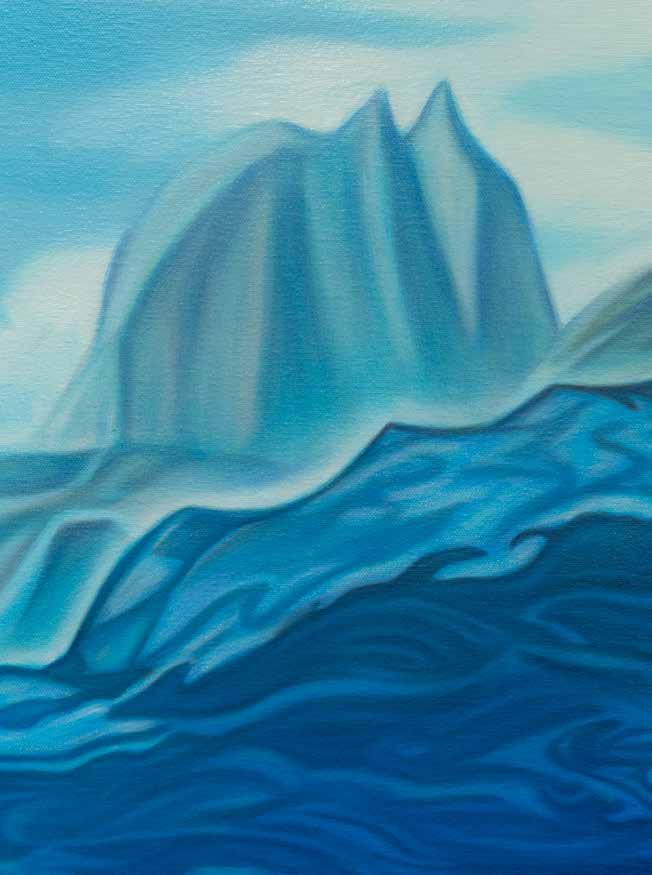
oil
60 x 48 in 152.4 x 121.9 cm



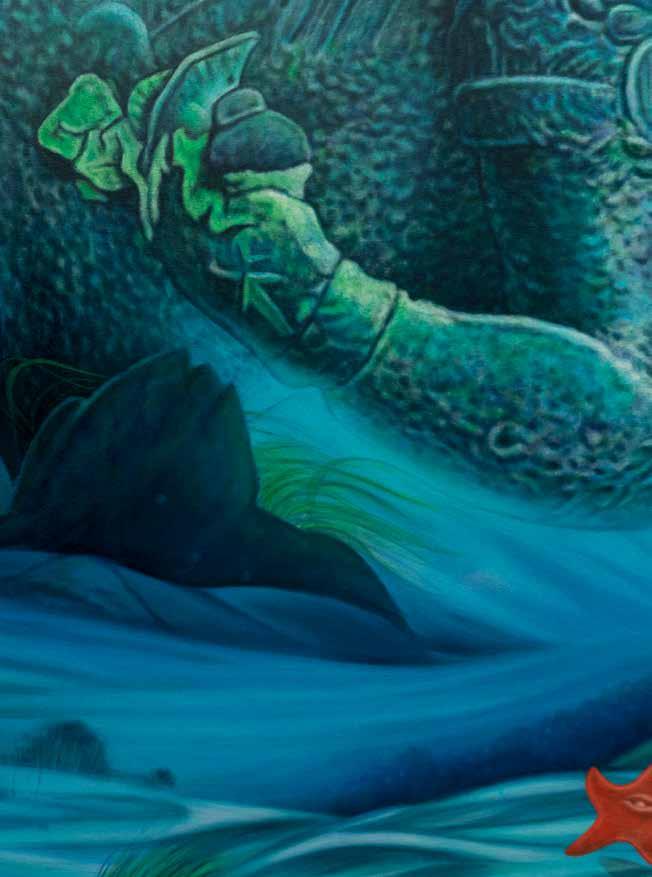
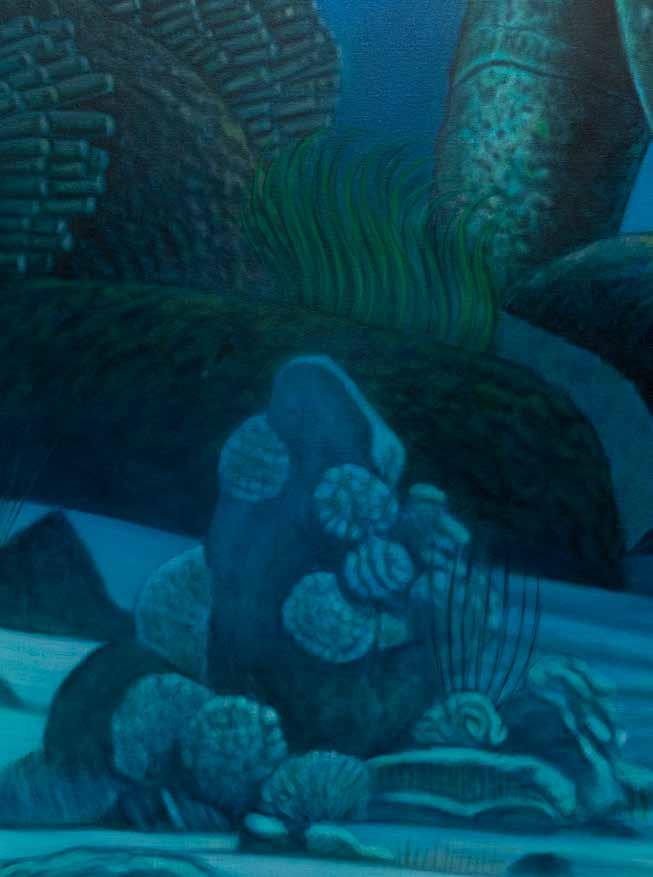
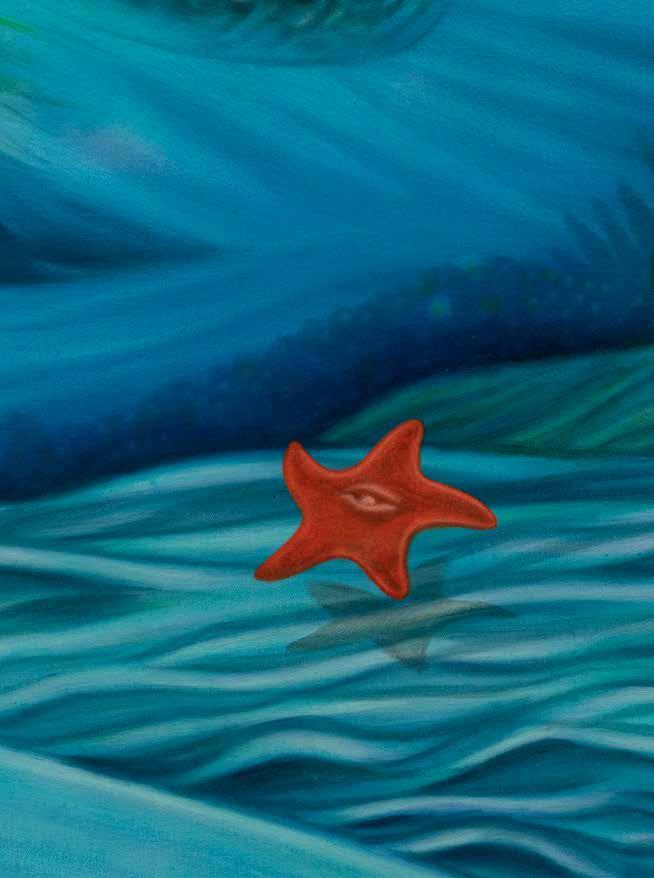
Underwater Exhale, 2022 oil on canvas 60 x 48 in 152.4 x 121.9 cm
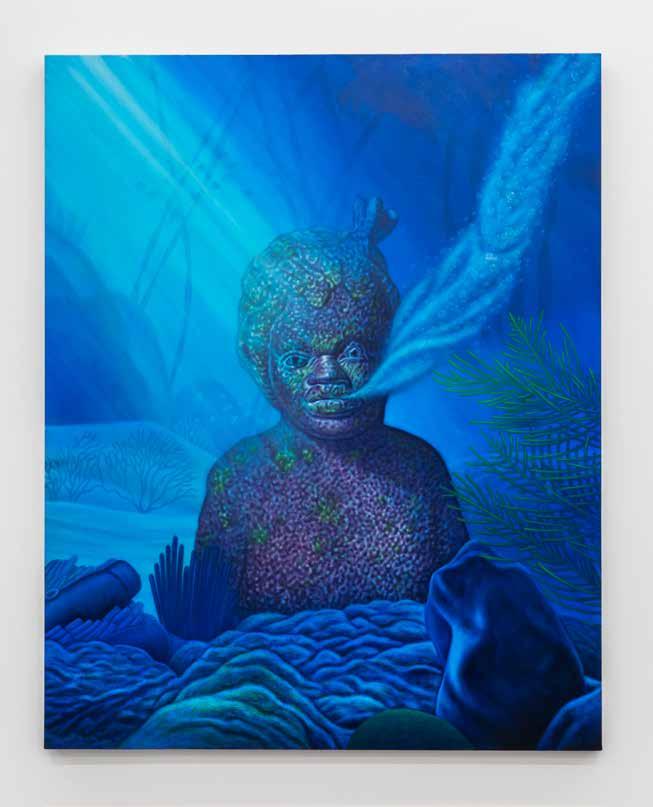
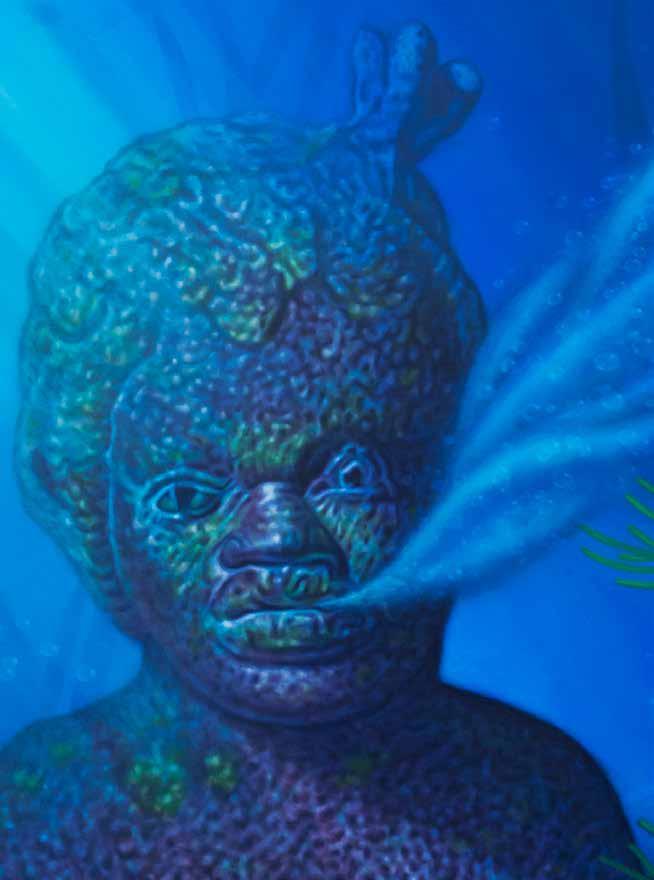

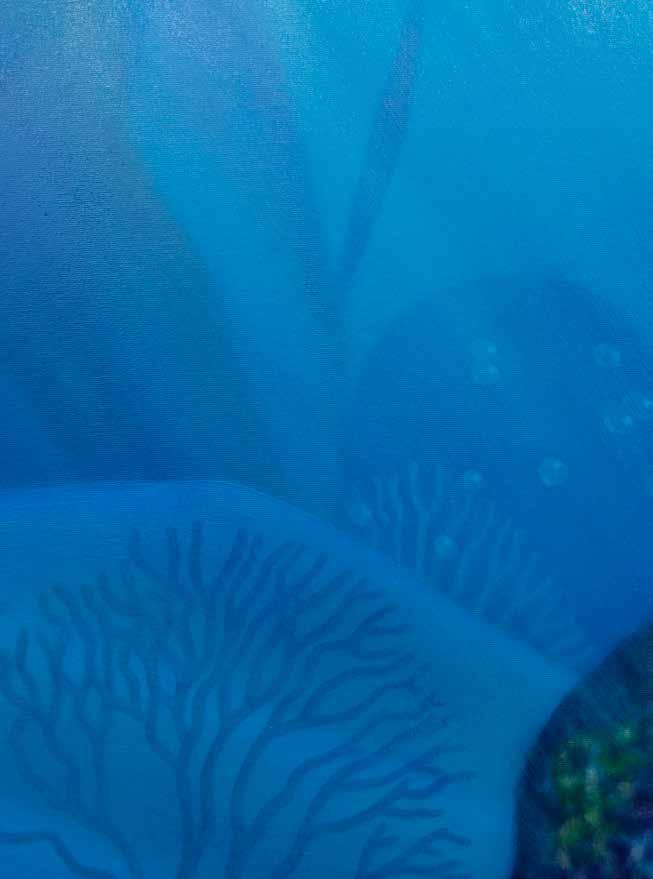

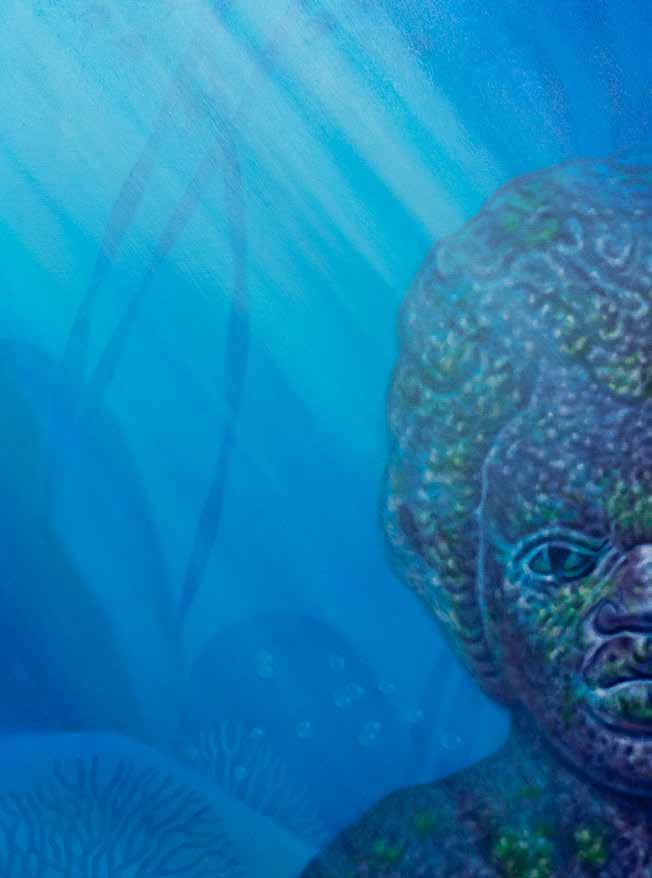
Rocky Reef Inhabitant, 2022 oil on canvas 60 x 48 in 152.4 x 121.9 cm
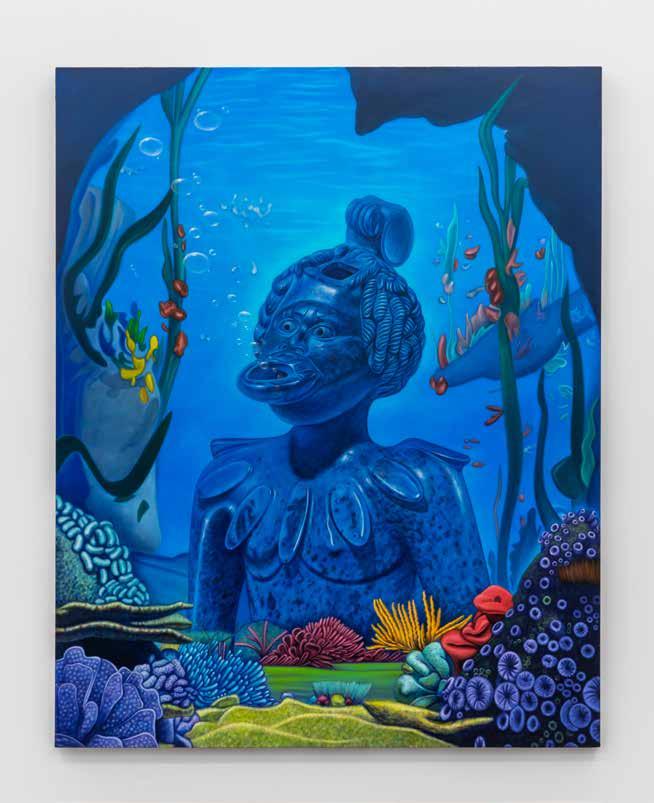
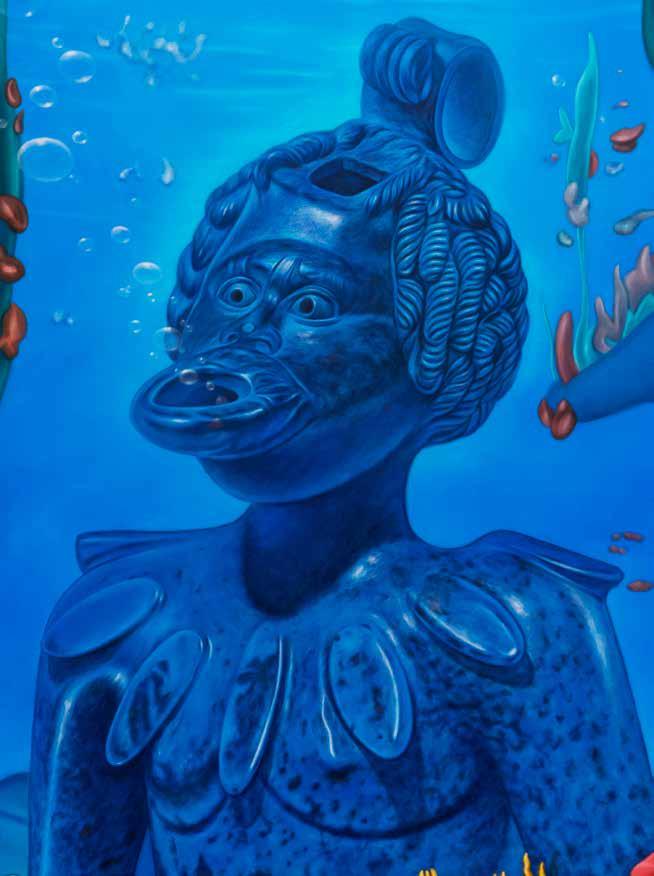
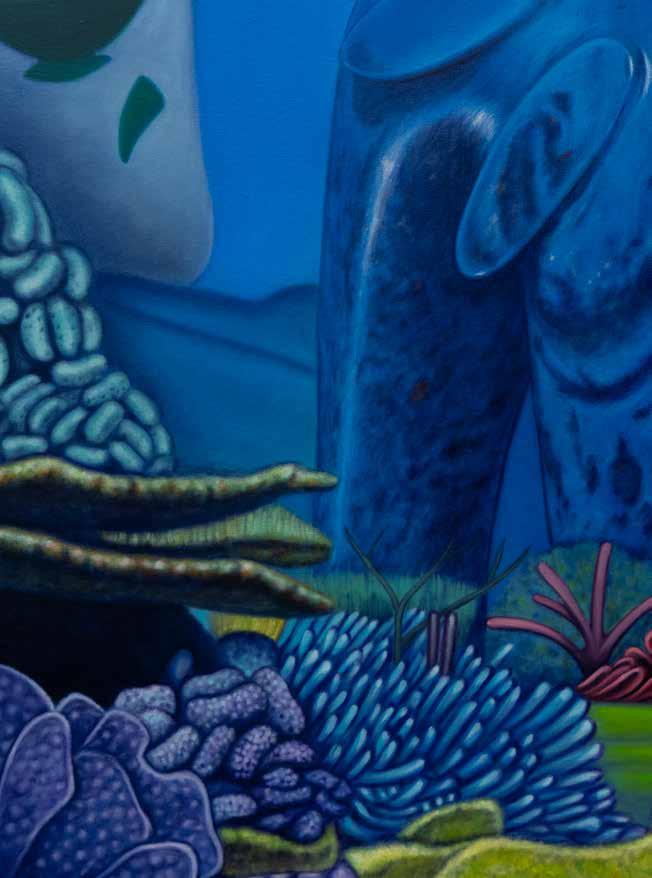

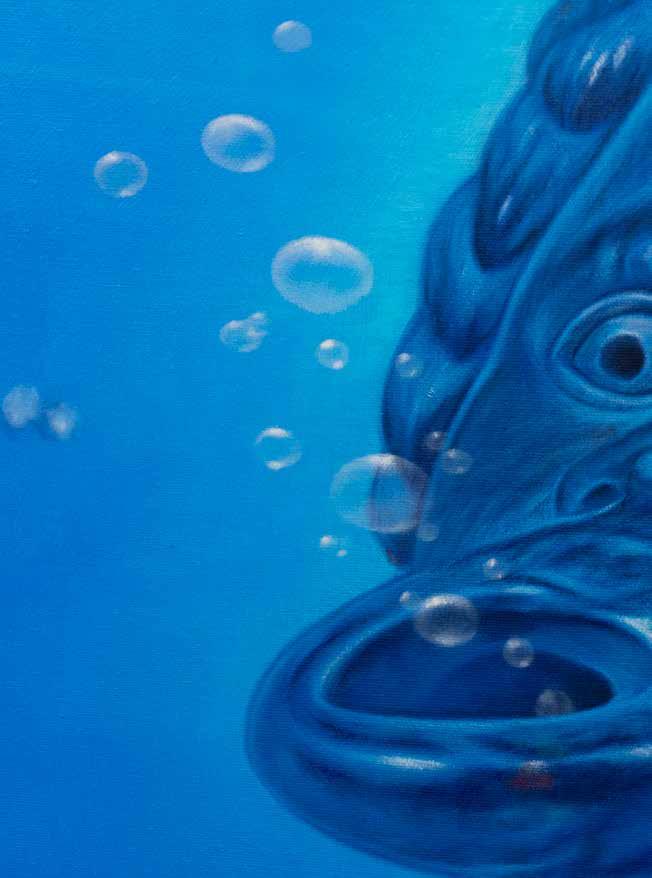

Iceberg Entity II (Glacial Fracture Head), 2022 oil on canvas 72 x 48 in 182.9 x 121.9 cm
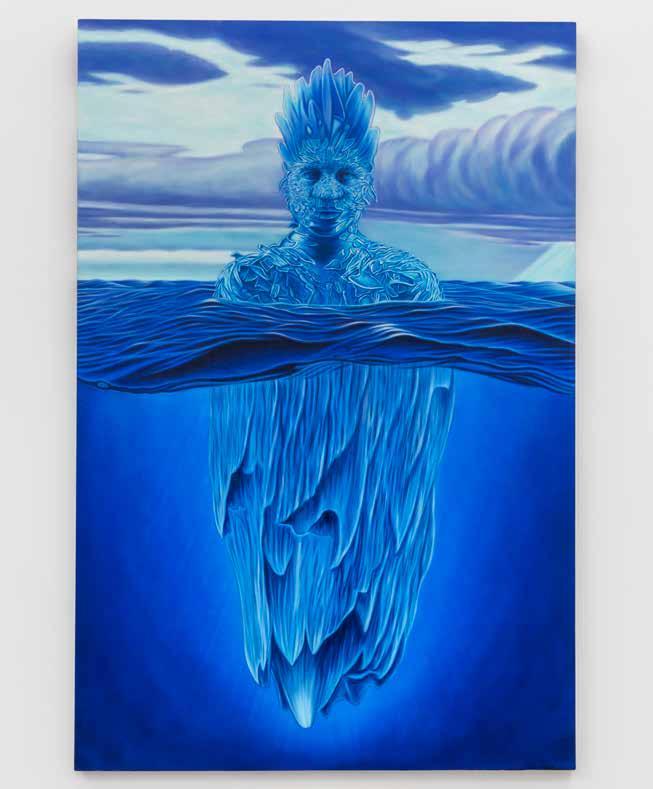

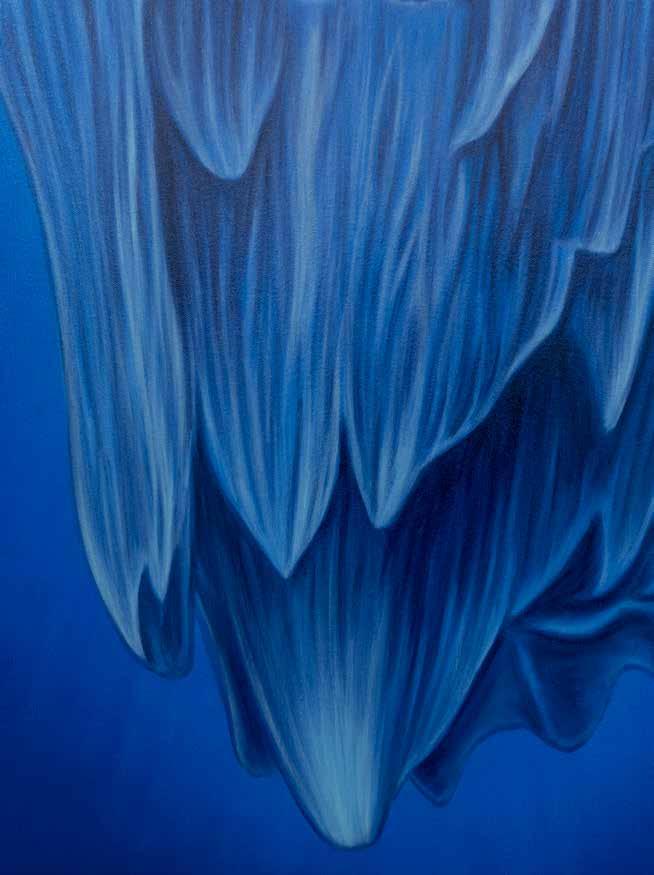
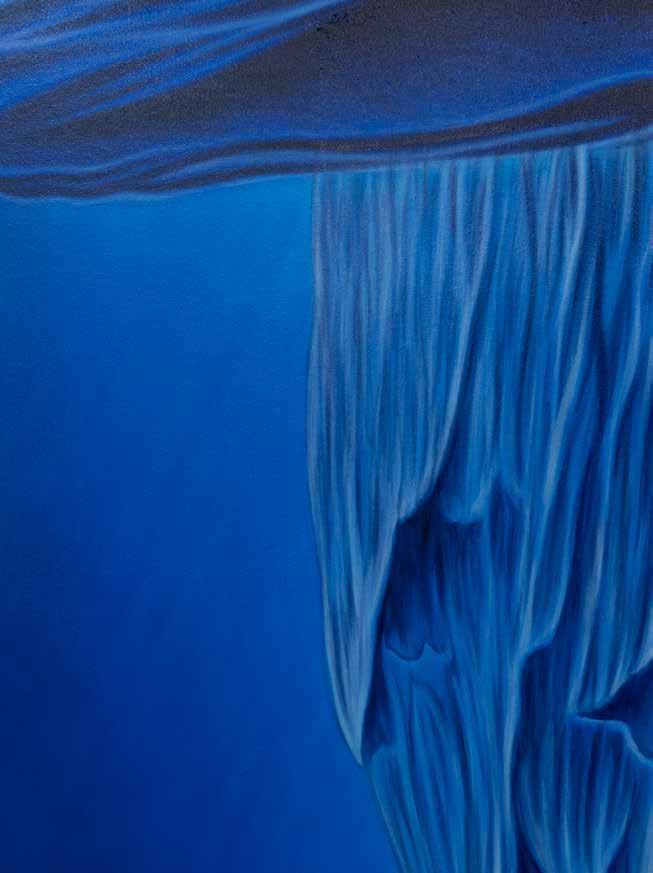
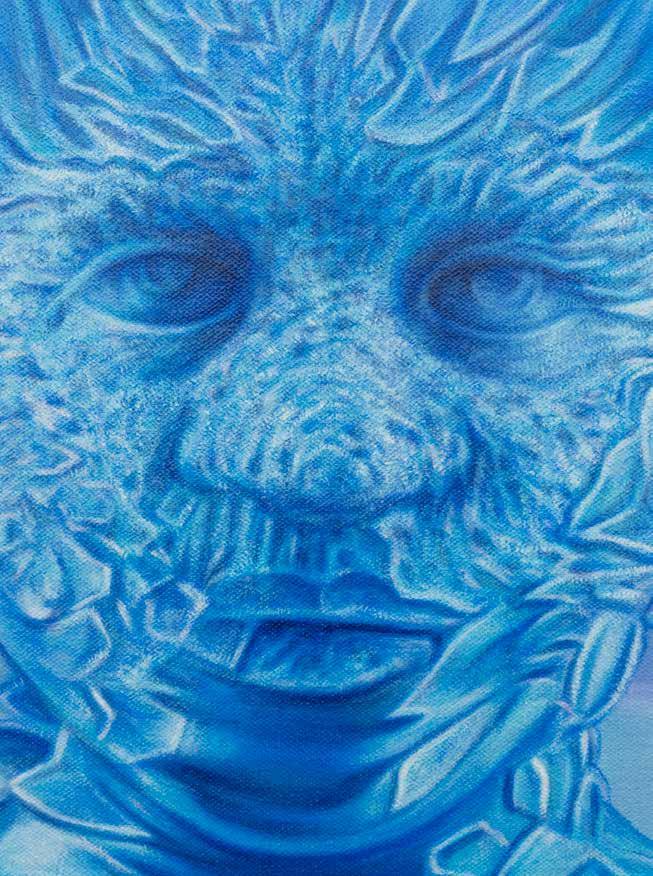
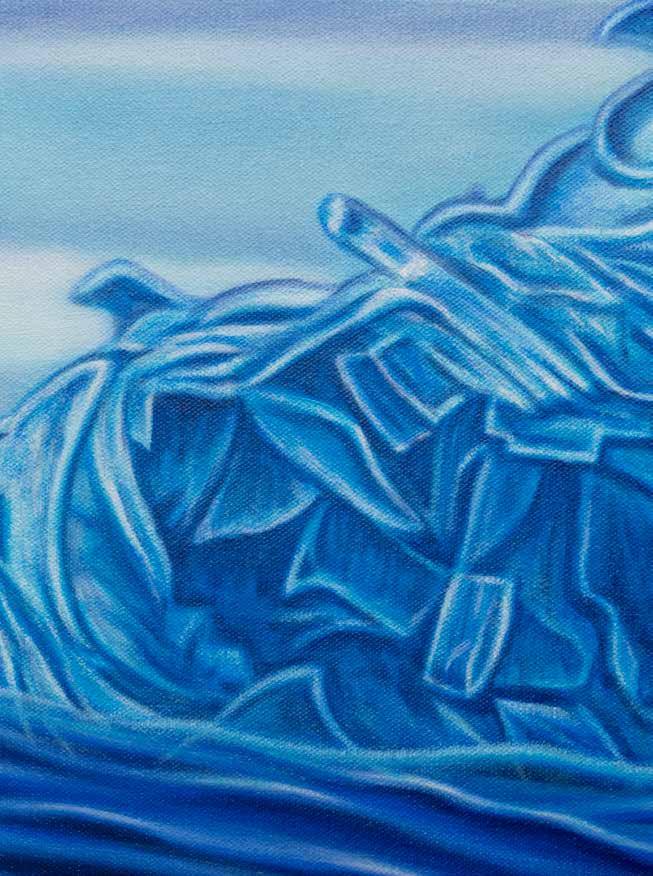
Iceberg Entity IV (Cracked Head Thawing), 2022 oil on canvas 72 x 48 in 182.9 x 121.9 cm
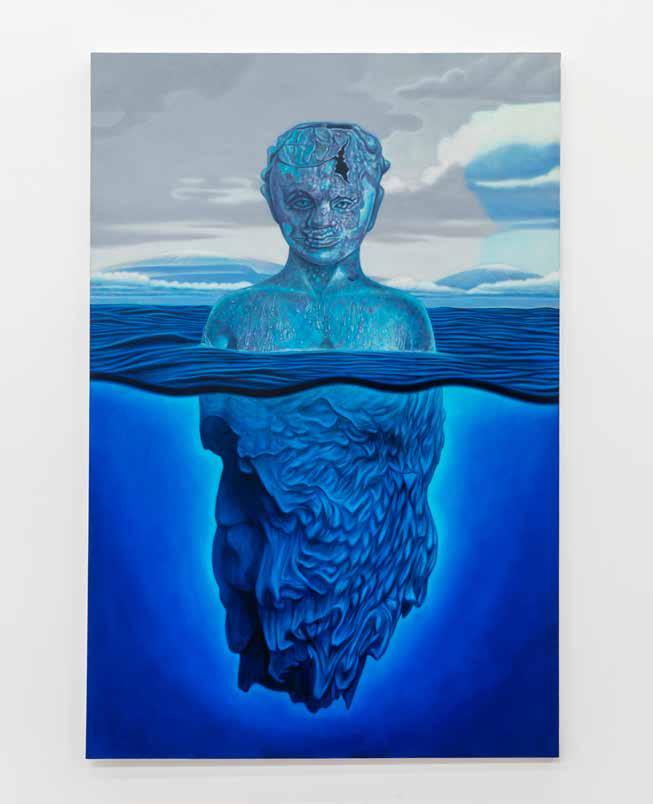
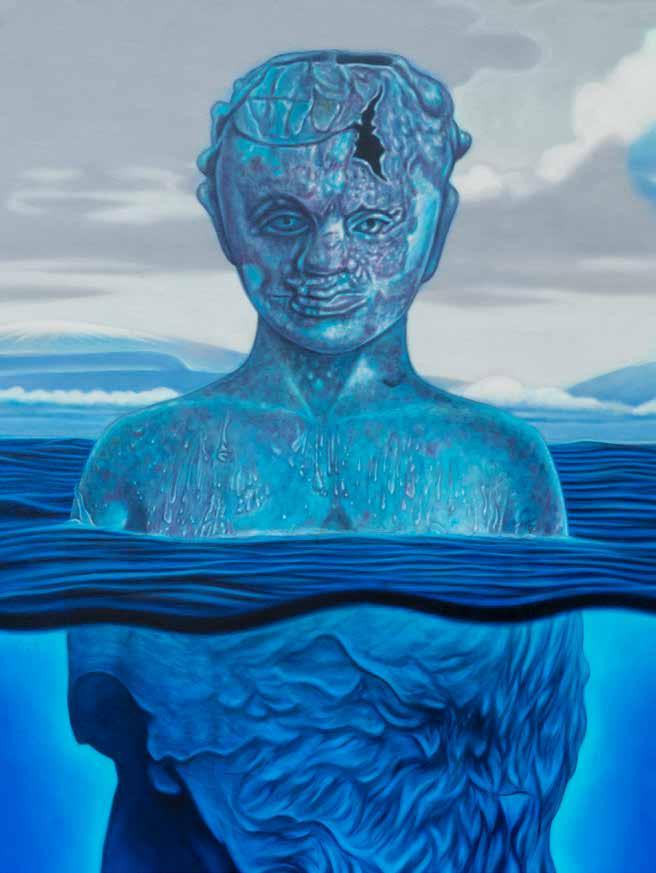
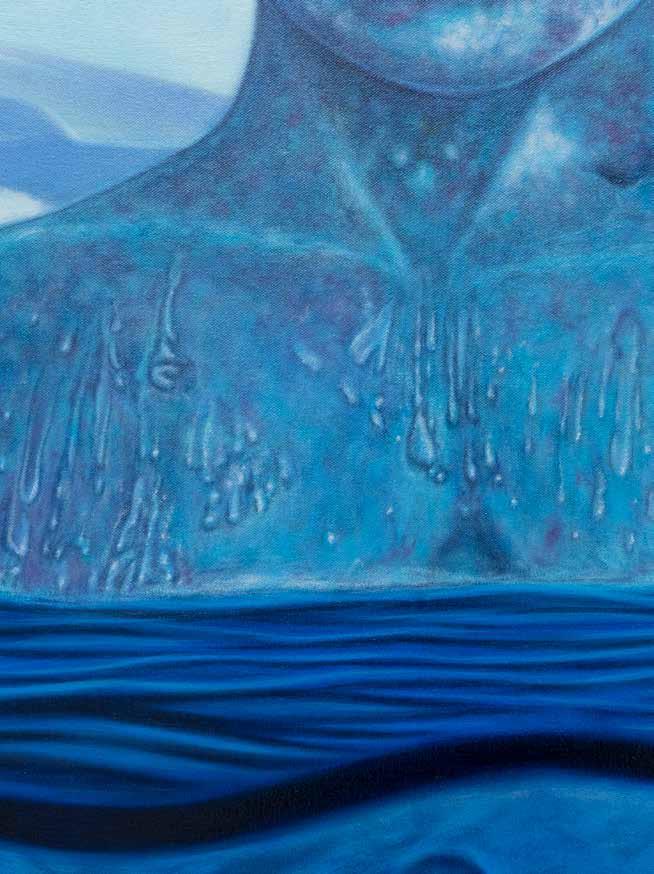
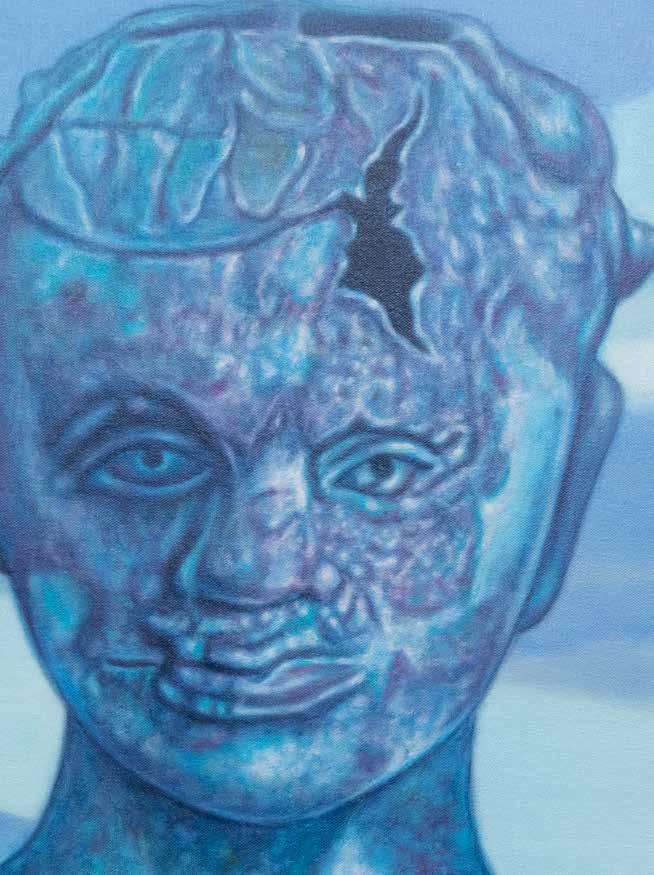
Iceberg Entity I (Pointed Peak Crown), 2022 oil on canvas 72 x 48 in 182.9 x 121.9 cm


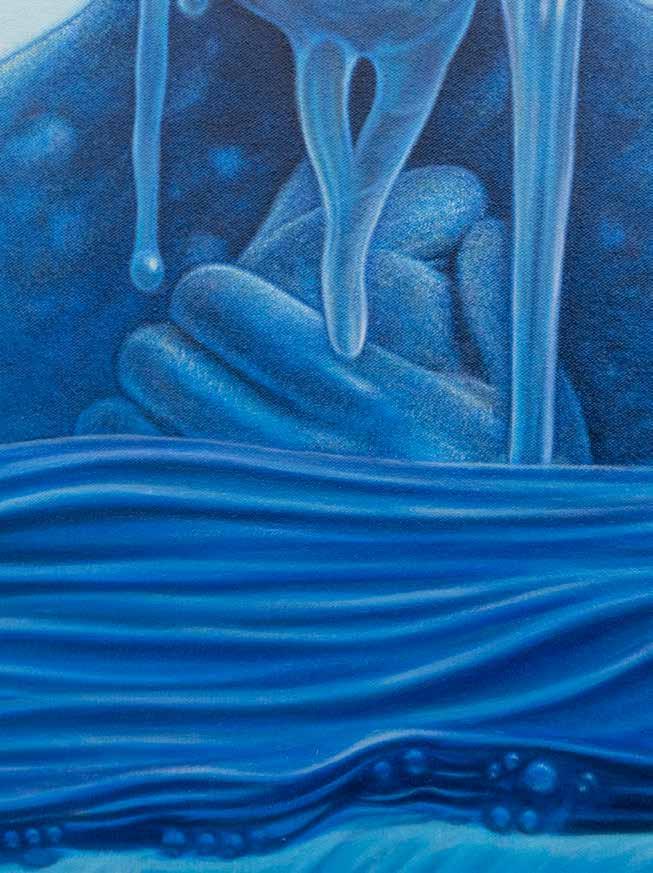
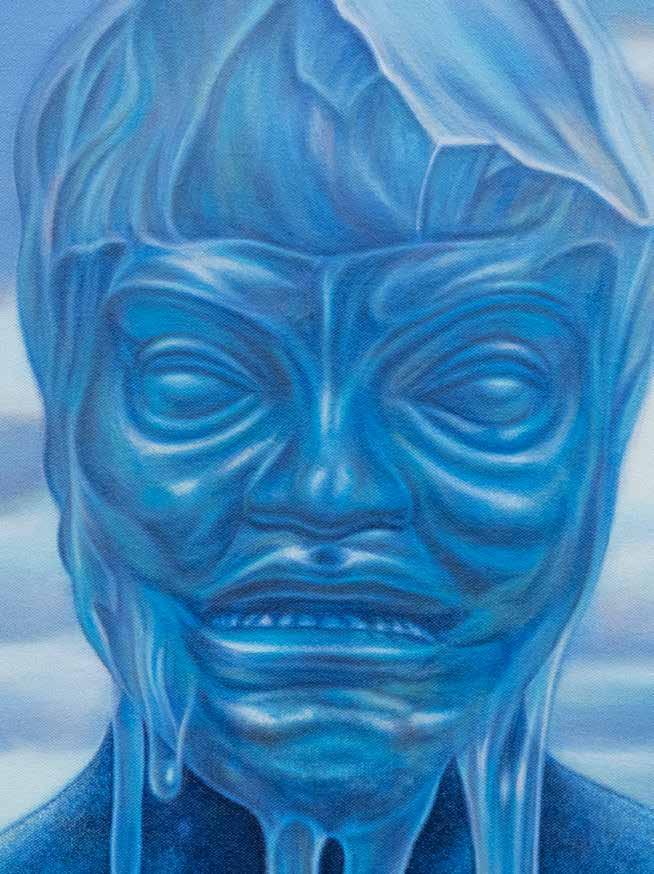
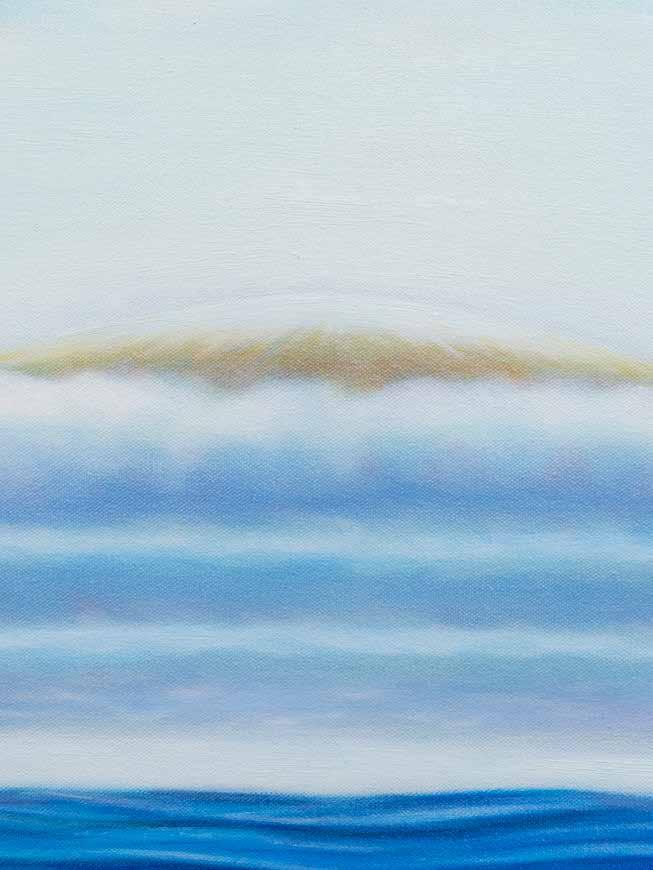
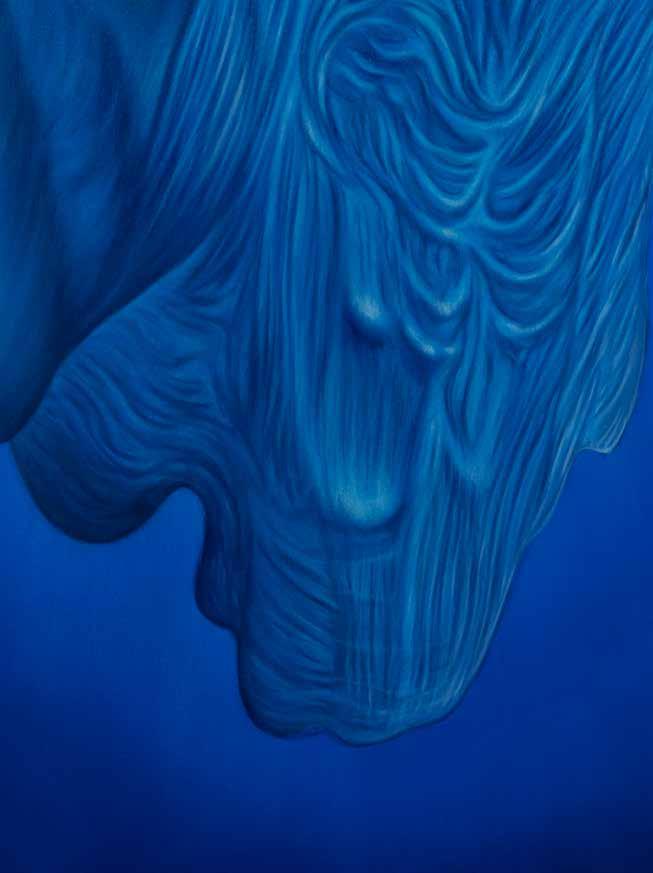
Iceberg Entity III (Ultramarine Gold Turban), 2022 oil on canvas 72 x 48 in 182.9 x 121.9 cm
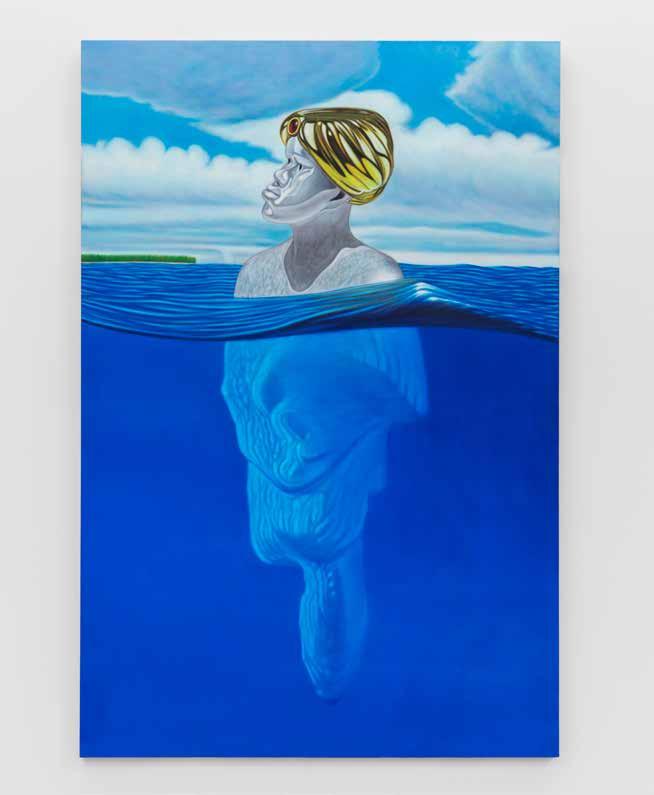



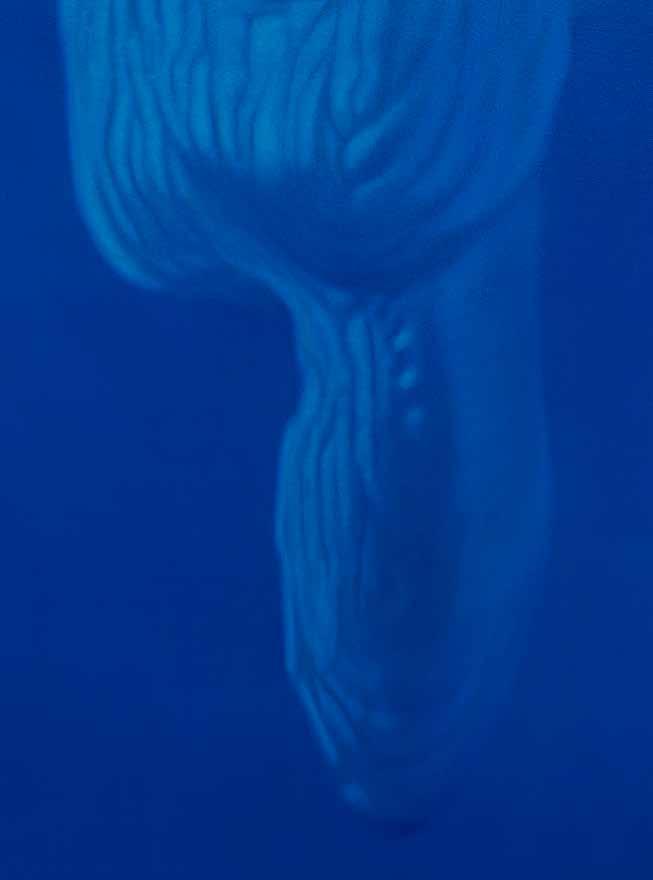
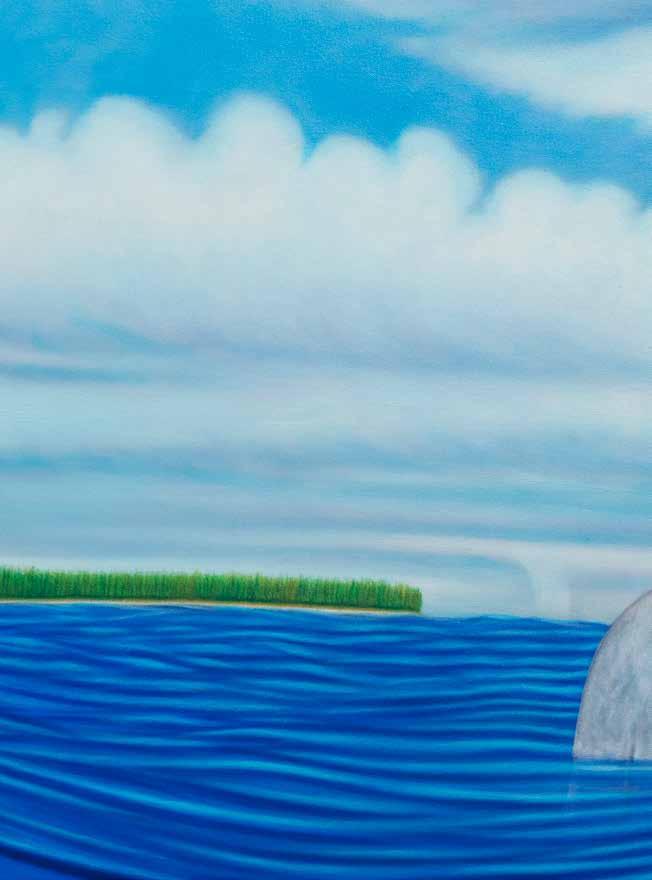
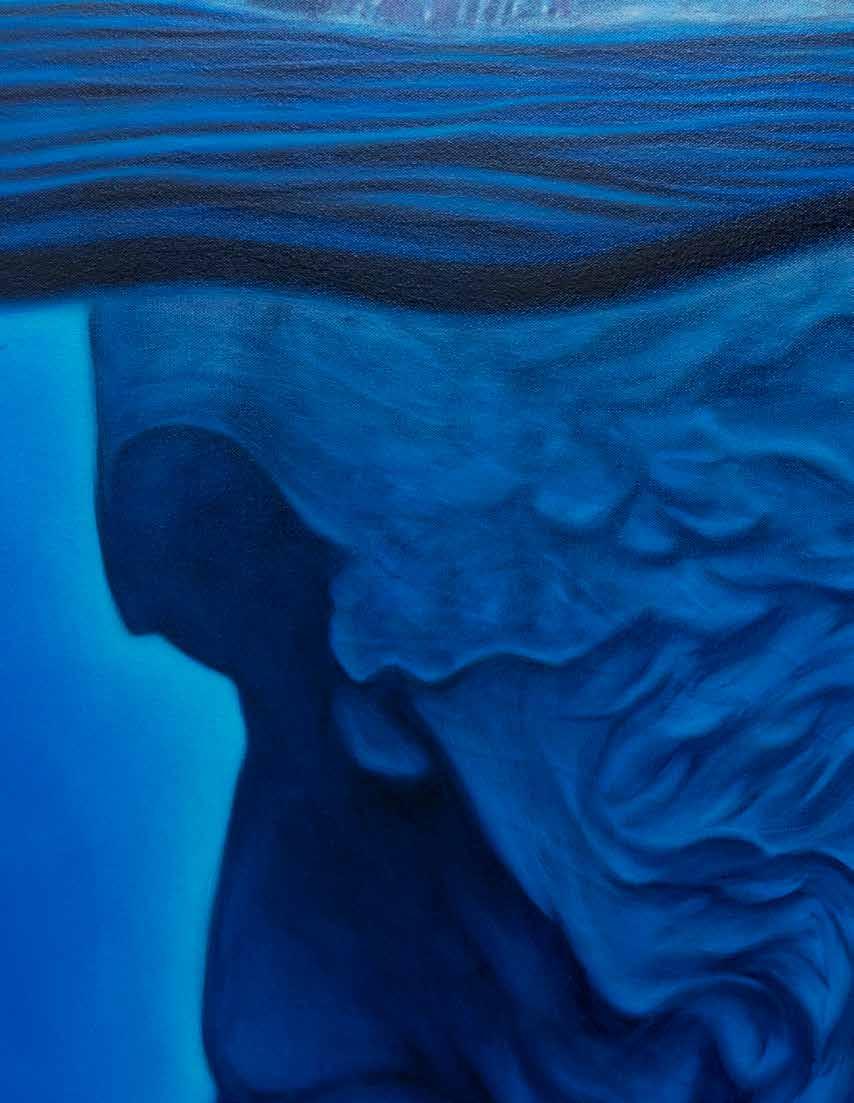
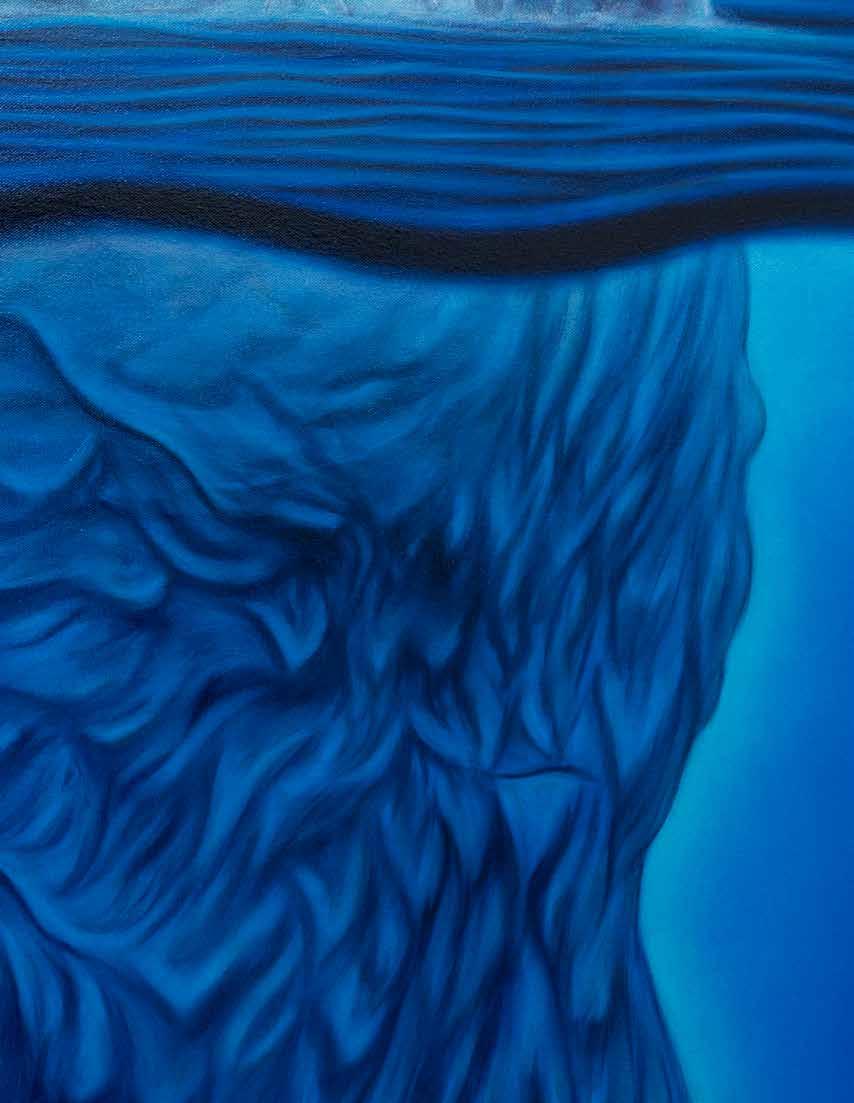
Kajahl (b. 1985 Santa Cruz, CA, lives in Santa Cruz) Kajahl received his BFA from San Francisco State University (2008) and attended the Accademia di Belle Arti Firenze, Italy (2007). He received his MFA from Hunter College, New York (2012). Currently, Kajahl is an Adjunct Faculty member at the New York Academy of Art. Kajahl has been in solo and group exhibitions at moniquemeloche, Chicago, IL; Richard Heller Gallery, Los Angeles, CA; Tillou Fine Art, Brooklyn, NY; 21c Museum Hotel, Chicago, IL; Super Duchess Gallery, New York, NY; Goodman Gallery, Johannesburg, South Africa; and Museum of Contemporary African Diaspora, Brooklyn, NY, among others. His work is in the permanent collections of The Studio Museum, Harlem, NY, 21C Museum Hotel, and the Dean Collection. He has received the Rydell Visual Arts Fellowship, New York, NY (2021); Lower Eastside Printshop as the Keyholder Resident, New York, NY (2019); Artist in Residence at the Joan Mitchell Center, New Orleans, LA (2018); the Joan Mitchell FoundationPainters and Sculptors Grant, New York, NY (2013).

Alyssa Brubaker is Director at moniquemeloche and an independent curator since 2008. Recent exhibitions include Ricardo Mondragon: Negative Space?, 2021; Robert Chase Heishman: Image Workers, 2020; Gesamt, 2020; Jan Brugger: Devices to Stay Afloat, 2019; what do rituals do?, 2018; and Design is a Verb, 2018. She received her B.F.A. in Sculpture from Tyler School of Art and Architecture, Philadelphia, PA (2009) and a Museum Studies Certificate from Northwestern University, Evanston, IL (2019). Brubaker was the Visual Arts Curatorial Resident at Elastic Arts from 2019-2021, and Exhibitions Manager at Logan Center Exhibitions, University of Chicago from 2016-2021.

Monique Meloche Gallery is located at 451 N Paulina Street, Chicago, IL 60622
For additional info, visit moniquemeloche.com or email info@moniquemeloche.com
